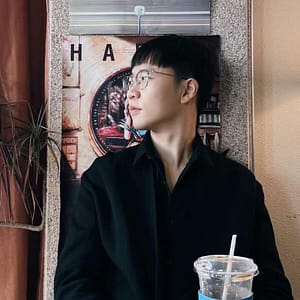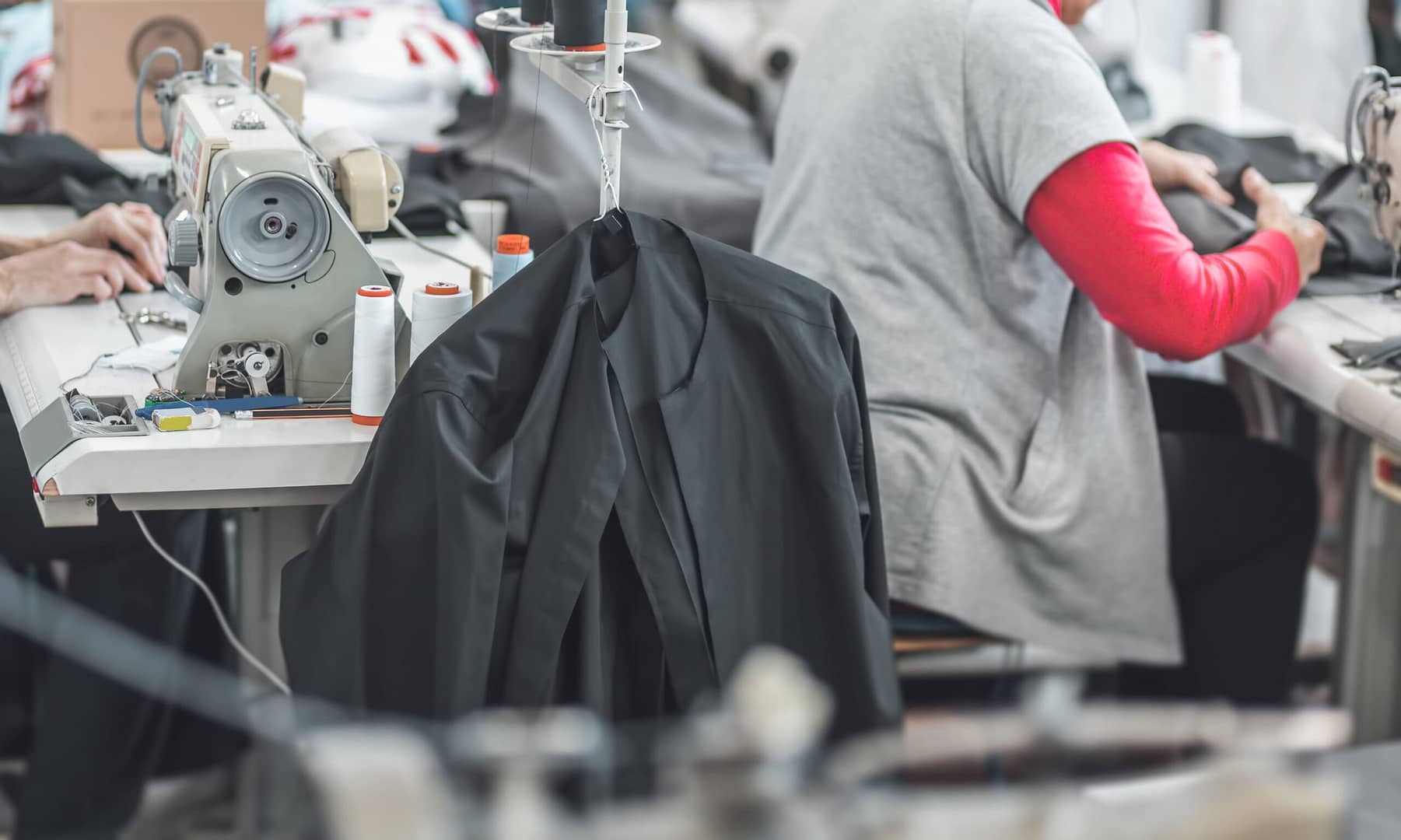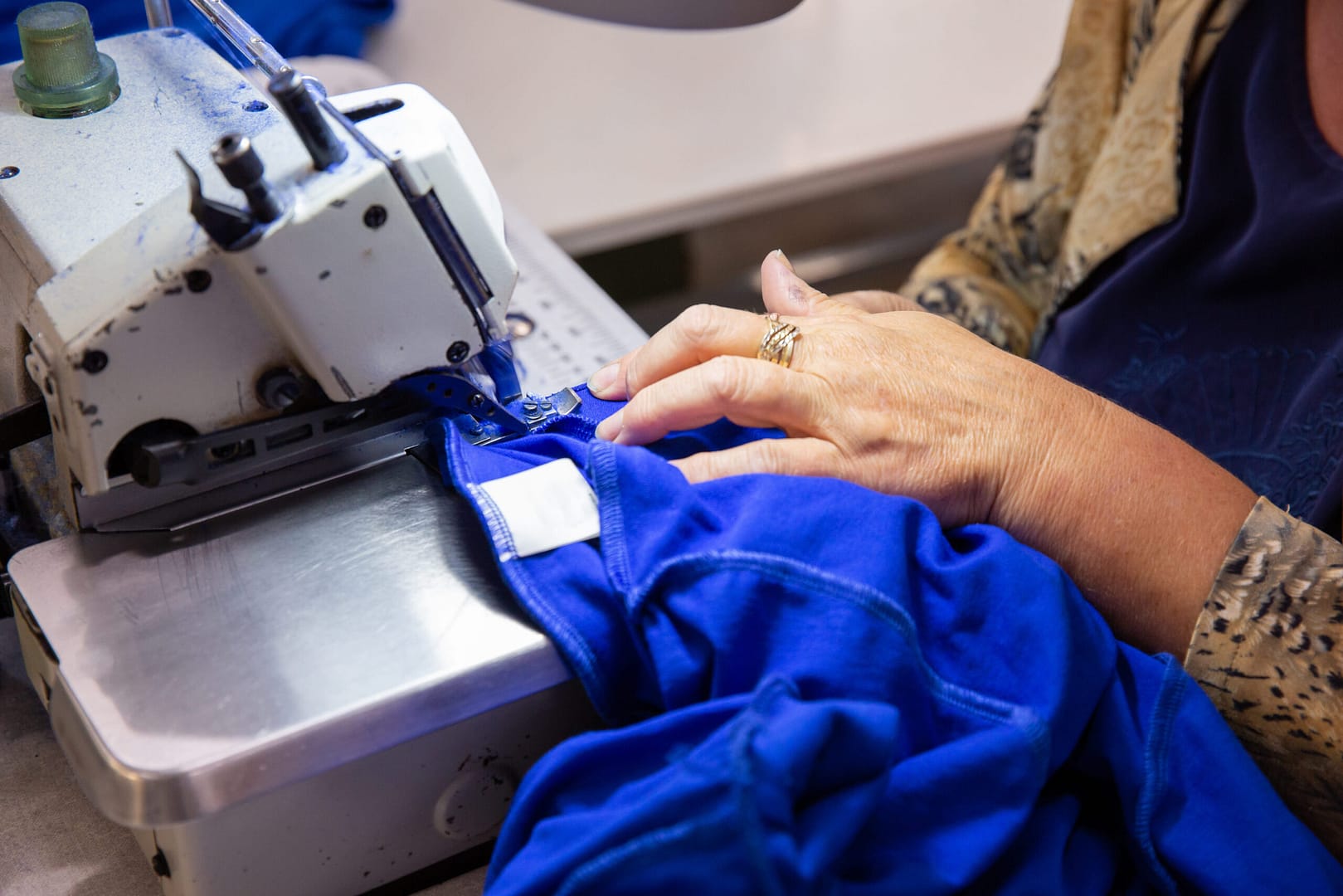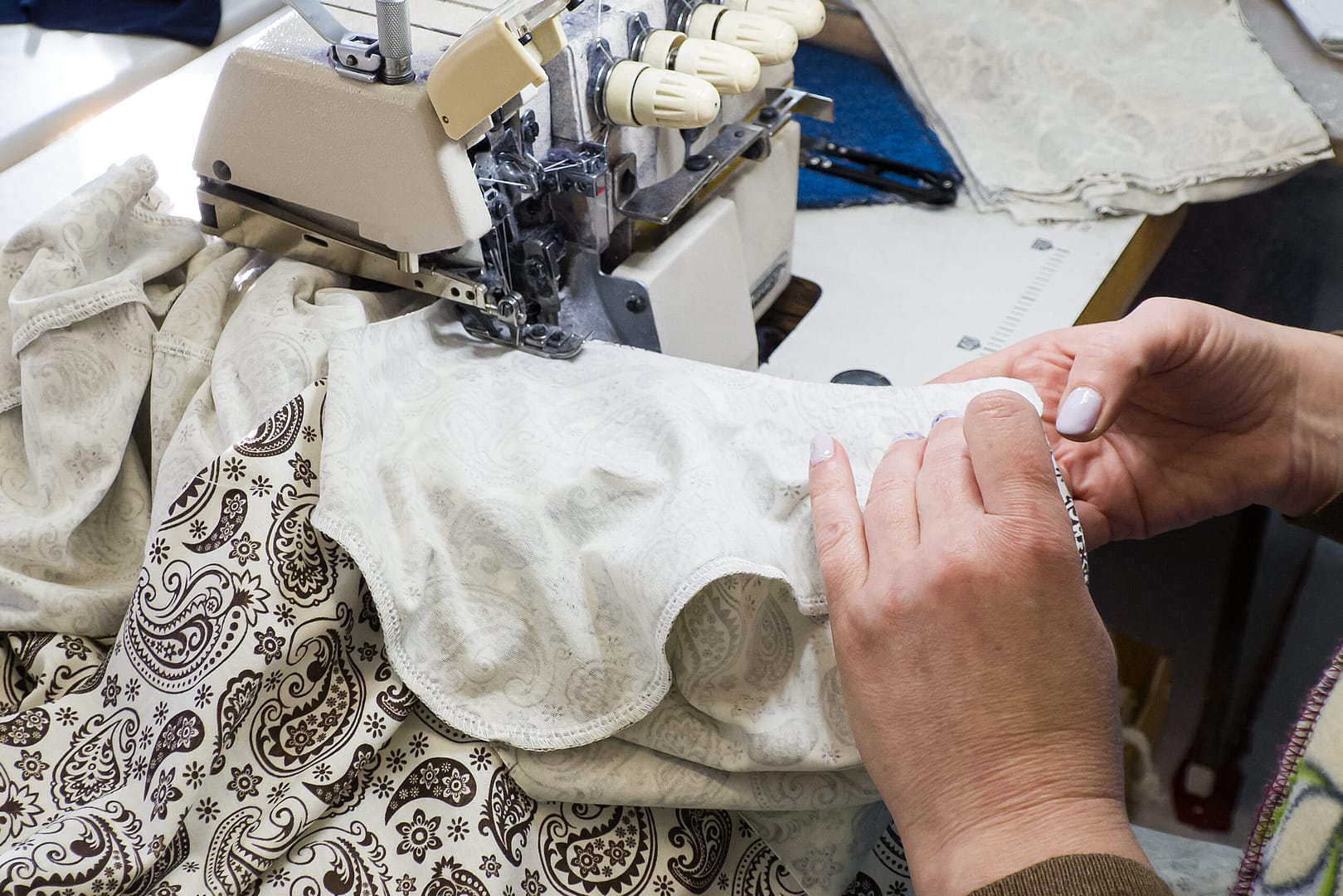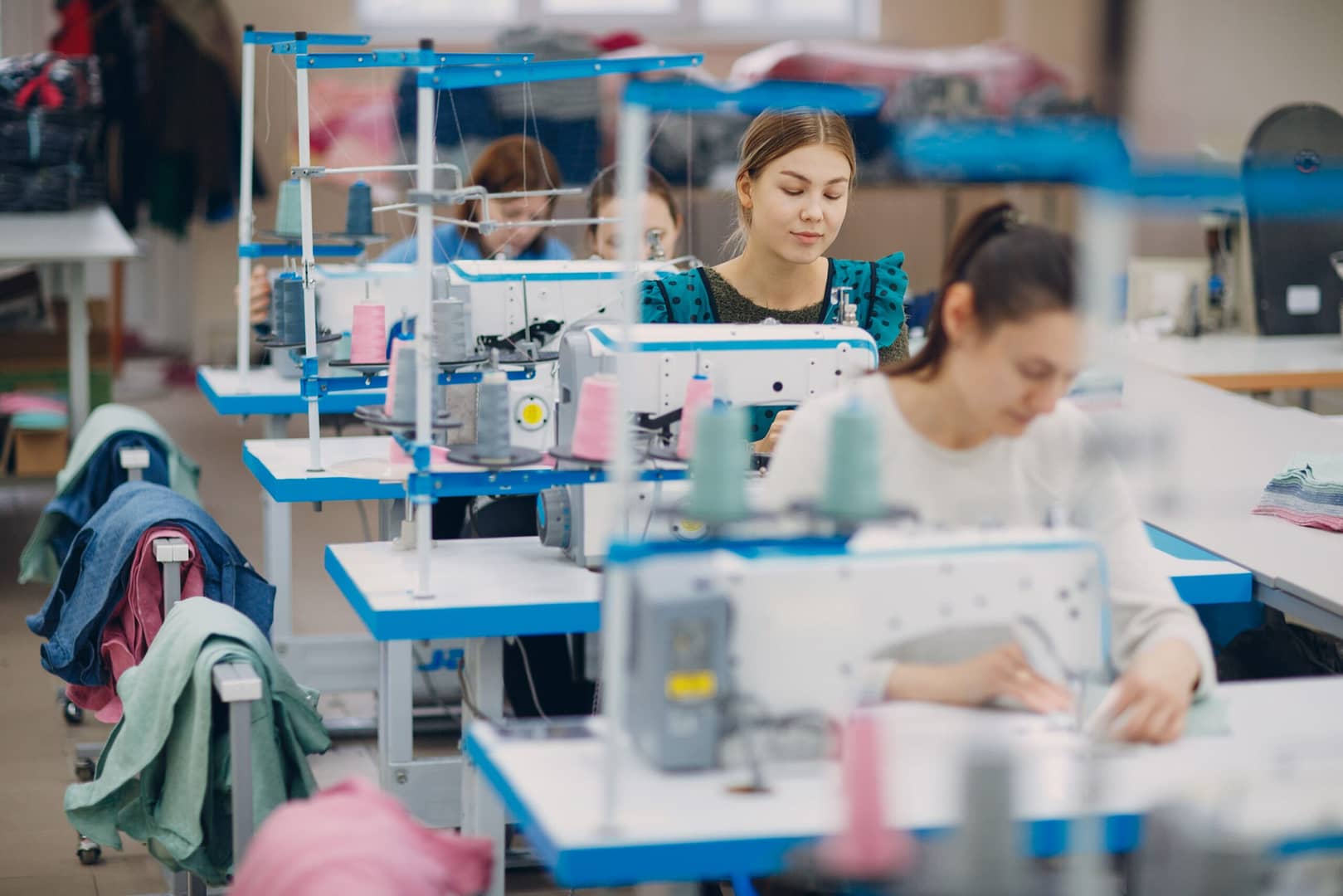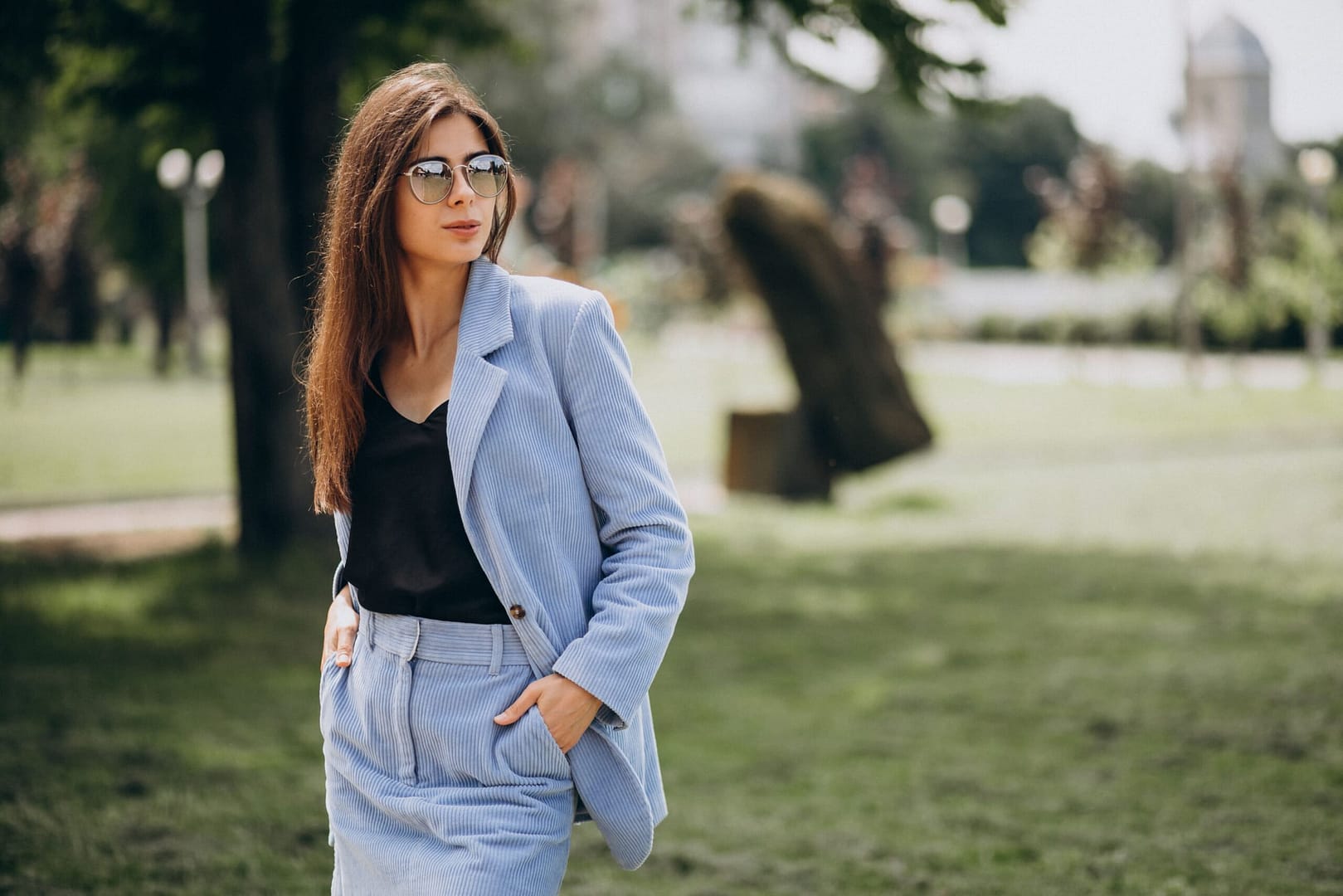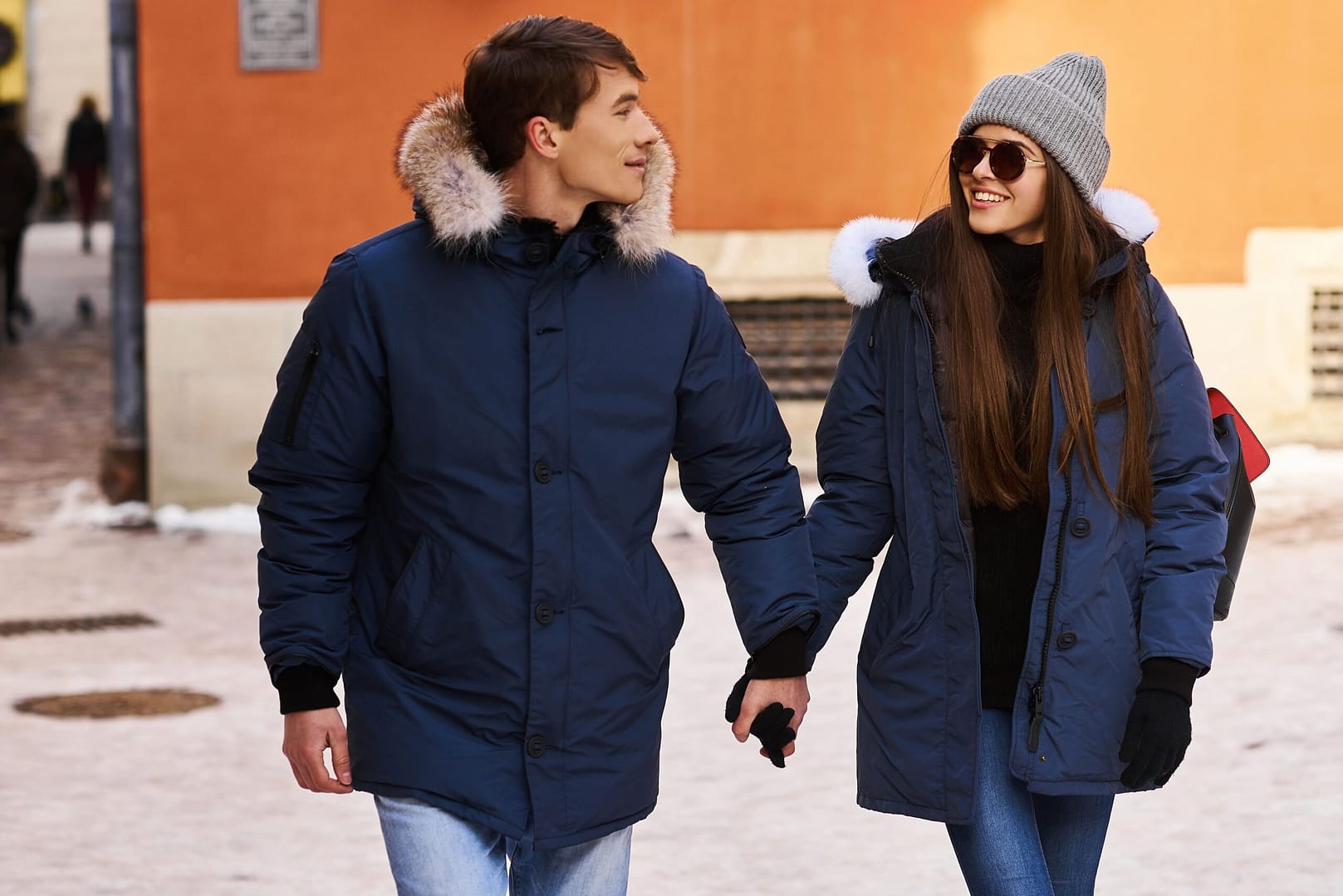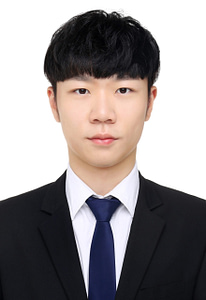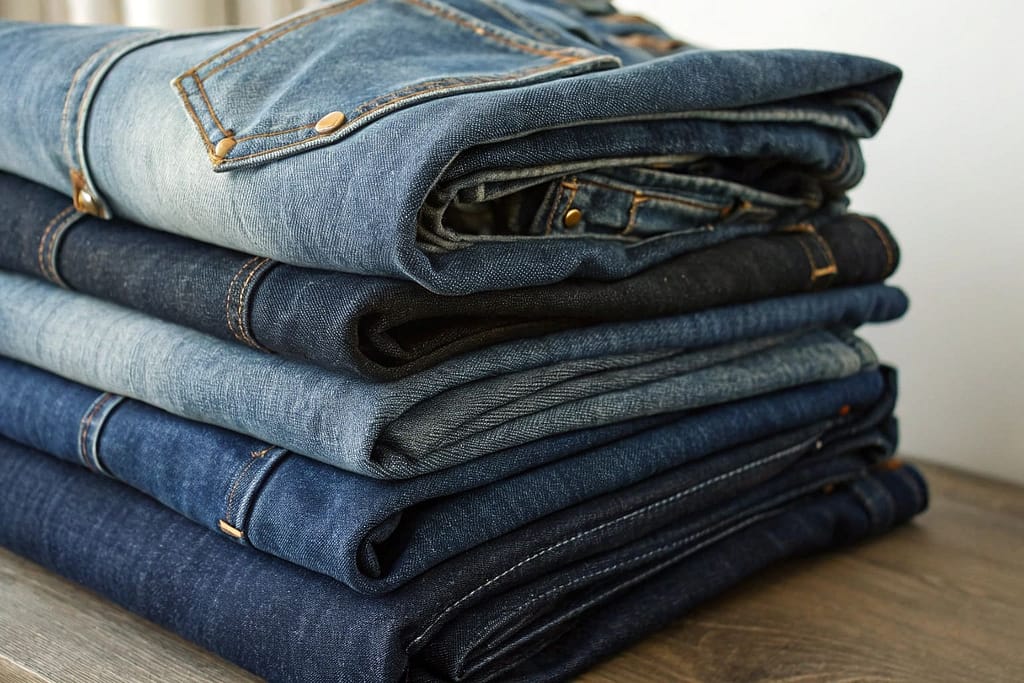
Imagine a world where rugged denim is essential for survival. That’s how jeans started in 1873 when Jacob Davis and Levi Strauss designed them for miners during the Gold Rush. What began as functional workwear has evolved into a global fashion icon.
Understanding Jeans Manufacturing
From raw cotton to your favourite pair of jeans, here’s how they’re made:
Turning Cotton into Denim
It all starts with cotton, spun into yarn and dyed indigo. The warp yarns take on the deep blue colour, while the weft yarns stay lighter, giving denim its signature two-tone look.
Weaving the Denim
Next, the yarn is woven on a loom. The warp and weft yarns interlace to create denim’s iconic twill weave, giving it strength and flexibility. The fabric is then washed, brushed, and sometimes sanded to perfect its texture.
Shaping the Jeans
The denim is cut into patterns and sewn together. Key features like pockets, zippers, and seams are added. Every stitch is carefully placed to ensure the jeans fit well and are built to last.
Adding the Distressed Look
Techniques like stone washing and sanding are used to give the denim that worn-in, vintage look. Each pair gets a unique finish, adding character to the fabric.
Finishing Touches
Rivets, buttons, and labels are added to complete the design. A final quality check ensures the jeans are durable, stylish, and ready for the market.
Designing the Perfect Jeans
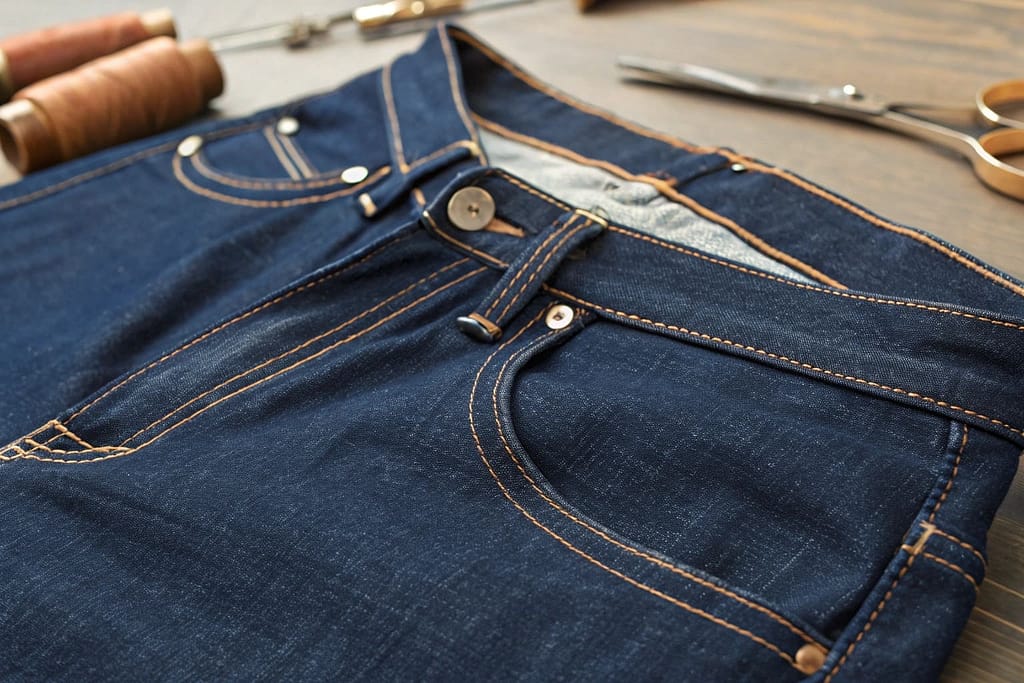
Designing jeans isn’t just about picking a fabric and stitching it together. It’s a careful balance of style, fit, and function. Every detail, from the shape of the pockets to the stitching on the seams, plays a role in the final product.
The Vision Behind the Design
It all starts with a vision. Designers consider everything from current trends to consumer needs. They sketch out ideas, select fabrics, and decide on the fit. A perfect pair of jeans isn’t just about looking good – it’s about feeling right, too. Whether it’s the rise, the waistband, or the leg cut, each element has to match the design vision.
Picking the Right Fabric
Choosing the right denim is crucial. Some jeans require stretchy denim for flexibility, while others call for raw denim, which gets better with age. The fabric choice affects the fit, comfort, and durability of the jeans. Designers also take into account sustainable options, like organic cotton or eco-friendly dyeing methods.
Crafting the Perfect Fit
The fit is everything. Whether it’s skinny, straight, or bootcut, the fit is what makes or breaks a pair of jeans. Designers use detailed patterns to get the perfect cut and ensure the jeans hug in all the right places. Patterns are carefully adjusted to accommodate various body shapes and sizes, giving every customer a flattering fit.
Adding the Details
No pair of jeans is complete without its signature details: the stitching, the rivets, the brand labels. These little touches elevate the jeans, giving them a unique character. A well-placed pocket or a vintage-style button can turn an ordinary pair into something extraordinary.
Types of Jeans
Jeans come in all shapes, sizes, and styles. Understanding the different types helps you find the perfect pair for your needs. From classic fits to modern cuts, here are the most popular types of jeans:
Skinny Jeans
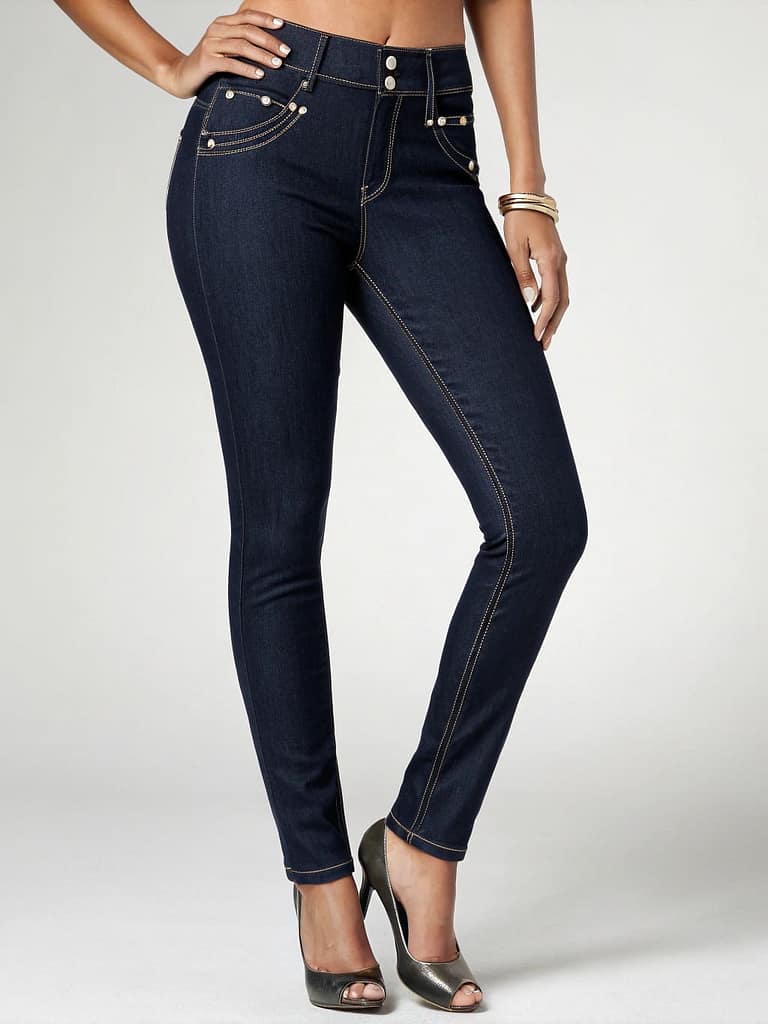
These are the form-fitting, stretch denim jeans that hug every curve. Perfect for those who want a sleek, modern look. Skinny jeans are ideal for pairing with heels, boots, or sneakers, and they’re a versatile option for both casual and dressier outfits.
Straight-Leg Jeans
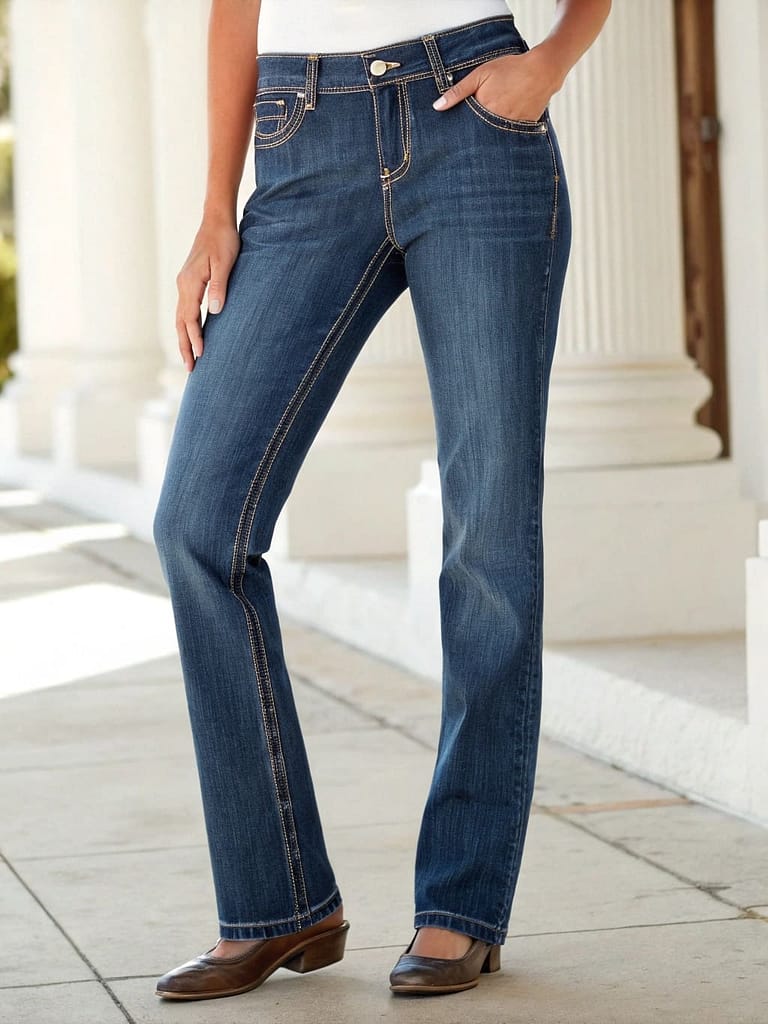
Straight-leg jeans run straight from the hip to the ankle. They offer a more relaxed fit, making them comfortable without sacrificing style. They’re a timeless and versatile option that pairs well with almost any top and shoes, from t-shirts to blazers.
Bootcut Jeans
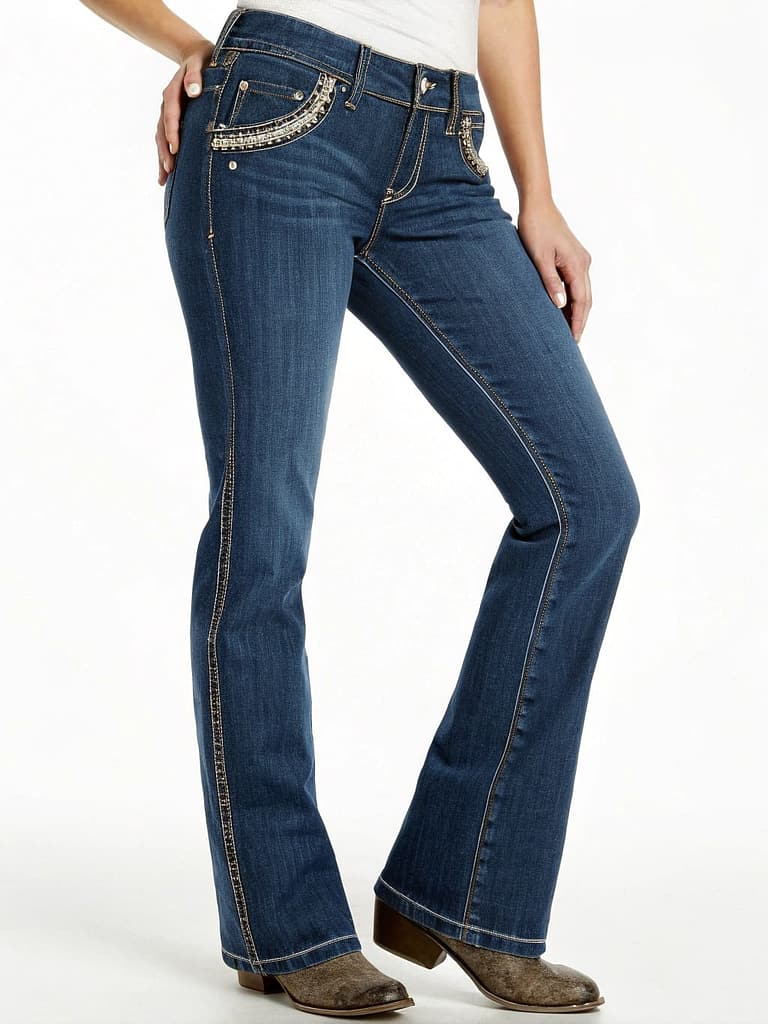
A slight flare from the knee to the ankle, bootcut jeans are perfect for wearing with boots, but they also work well with other footwear. This style balances a tailored fit at the top with room to move at the bottom, creating a flattering silhouette for many body types.
Flare Jeans
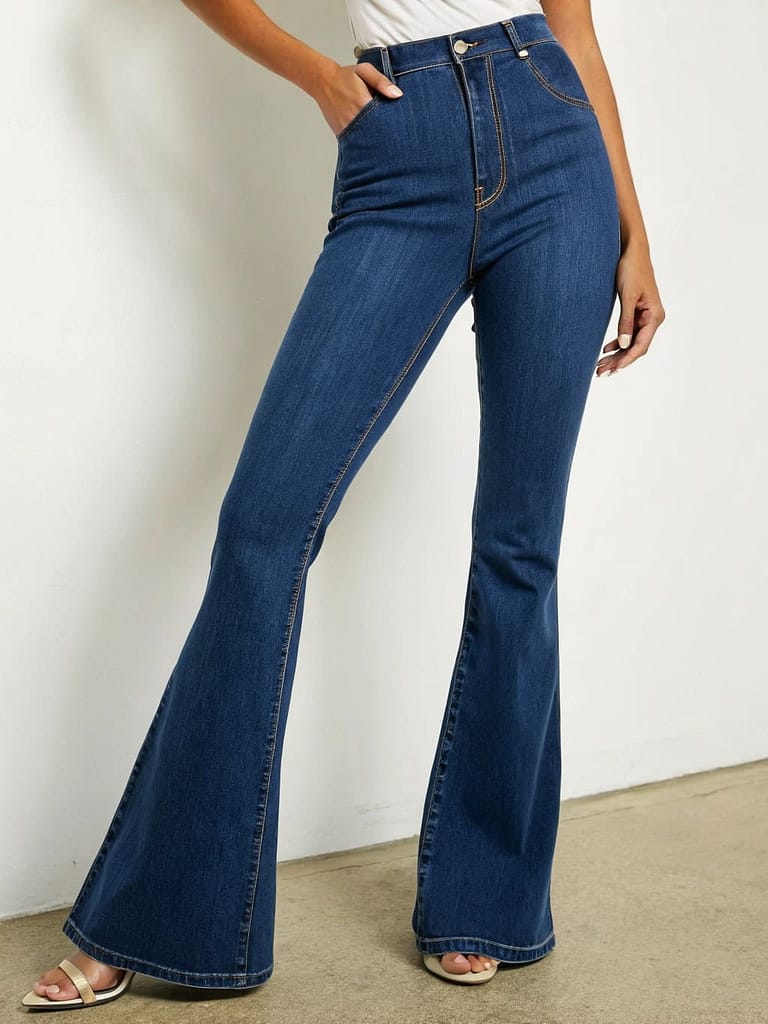
Flare jeans take bootcut to the next level, offering a wider flare from the knee down. A throwback to the ’70s, they add a bold, retro vibe to your wardrobe. These jeans are perfect for making a statement and elongating your legs, especially when paired with platform shoes.
Mom Jeans
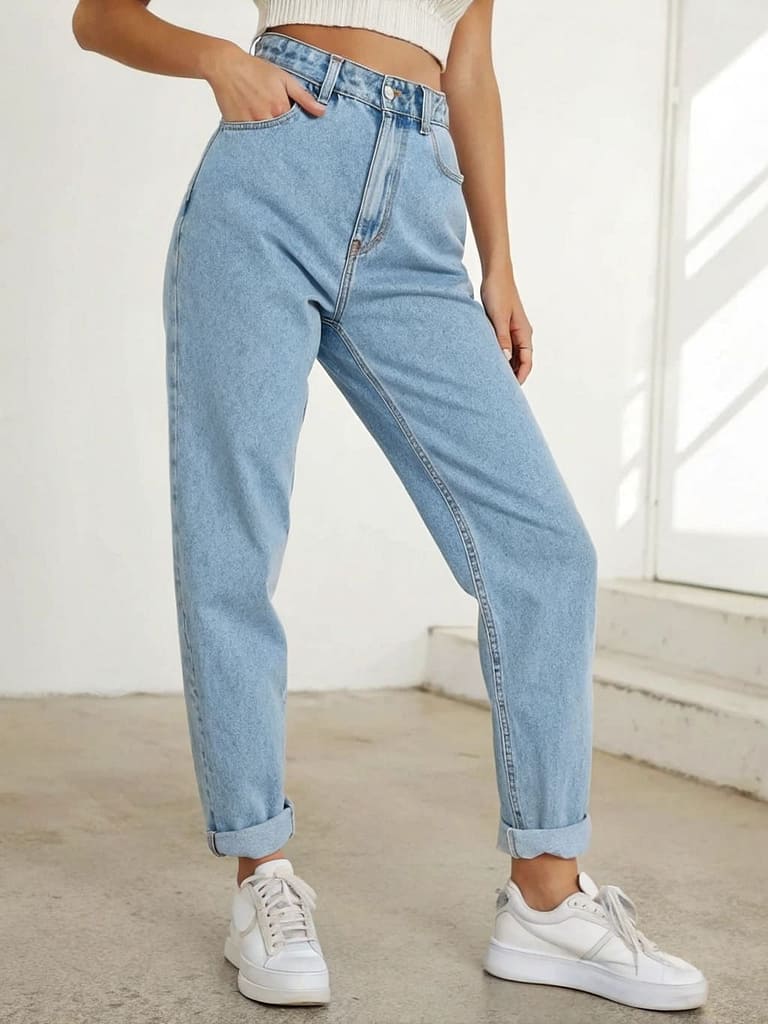
High-waisted with a loose fit around the hips and thighs, mom jeans are all about comfort and vintage style. They offer a relaxed look that’s made a strong return in modern fashion. They pair well with tucked-in shirts or oversized sweaters for that effortlessly cool vibe.
Relaxed Fit Jeans
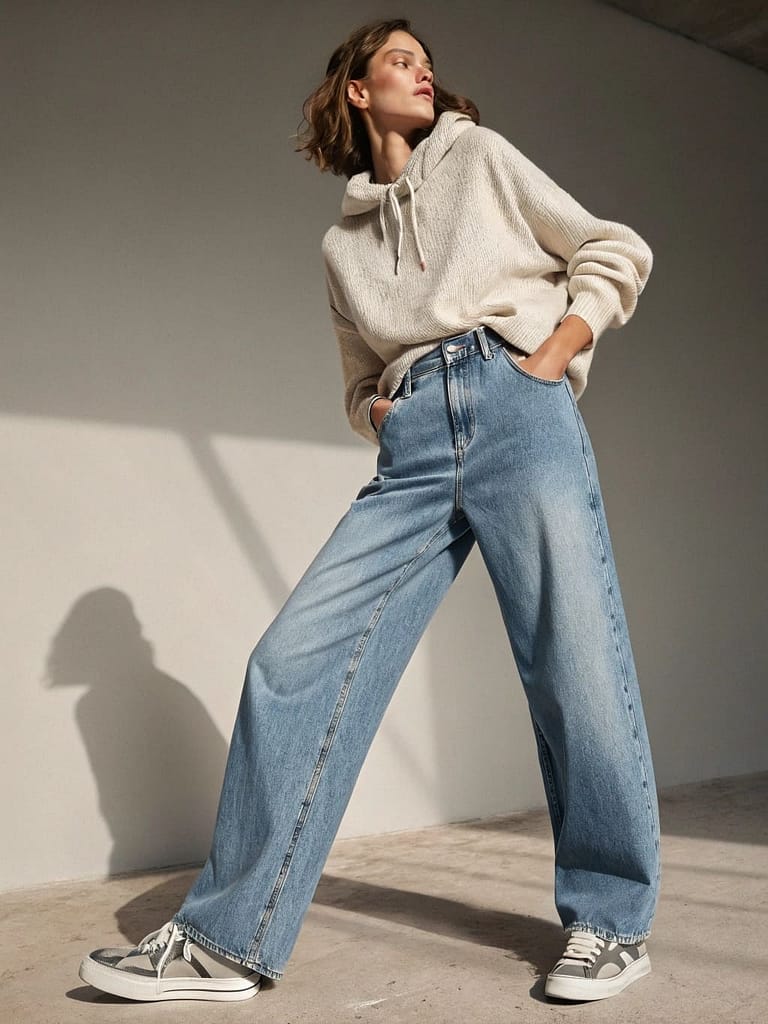
These jeans offer more room in the seat and thighs, providing comfort and a laid-back look. Perfect for casual wear, relaxed-fit jeans are great for those who want to avoid the tightness of skinny jeans but still want a structured style.
Slim Fit Jeans
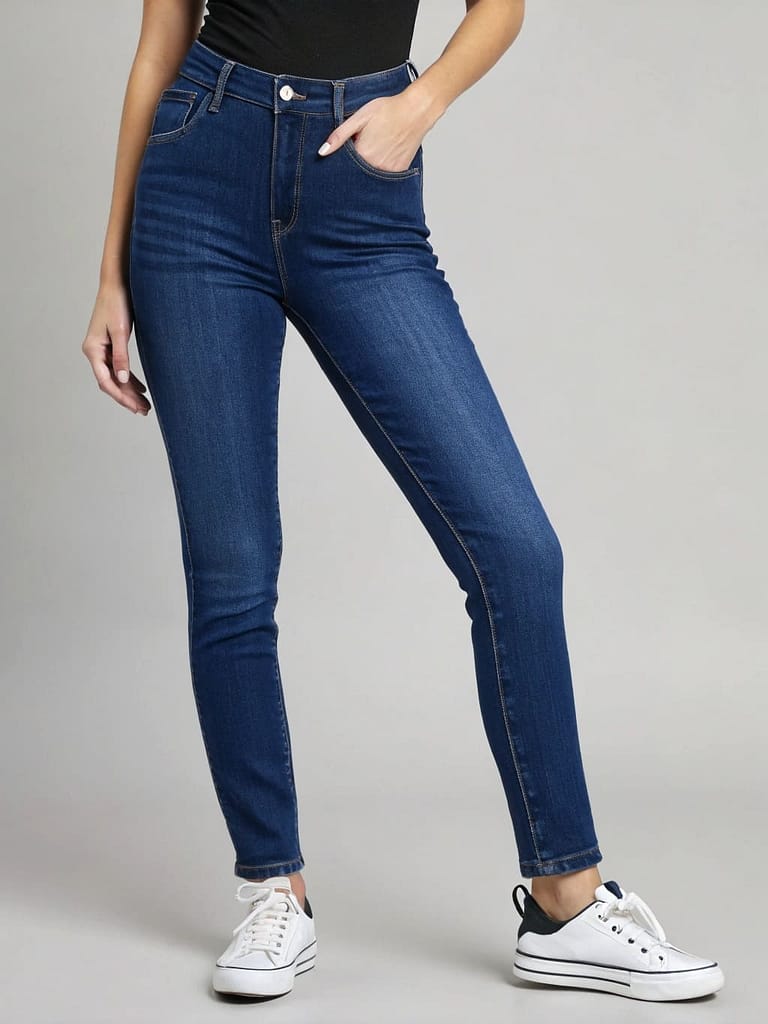
Slim fit jeans sit close to the body, with a narrow leg that tapers toward the ankle. They’re a great alternative to skinny jeans for those who want a more tailored look without the extreme tightness. Slim-fit jeans work well in both casual and smart-casual outfits, offering a sharp silhouette that’s still comfortable.
Boyfriend Jeans
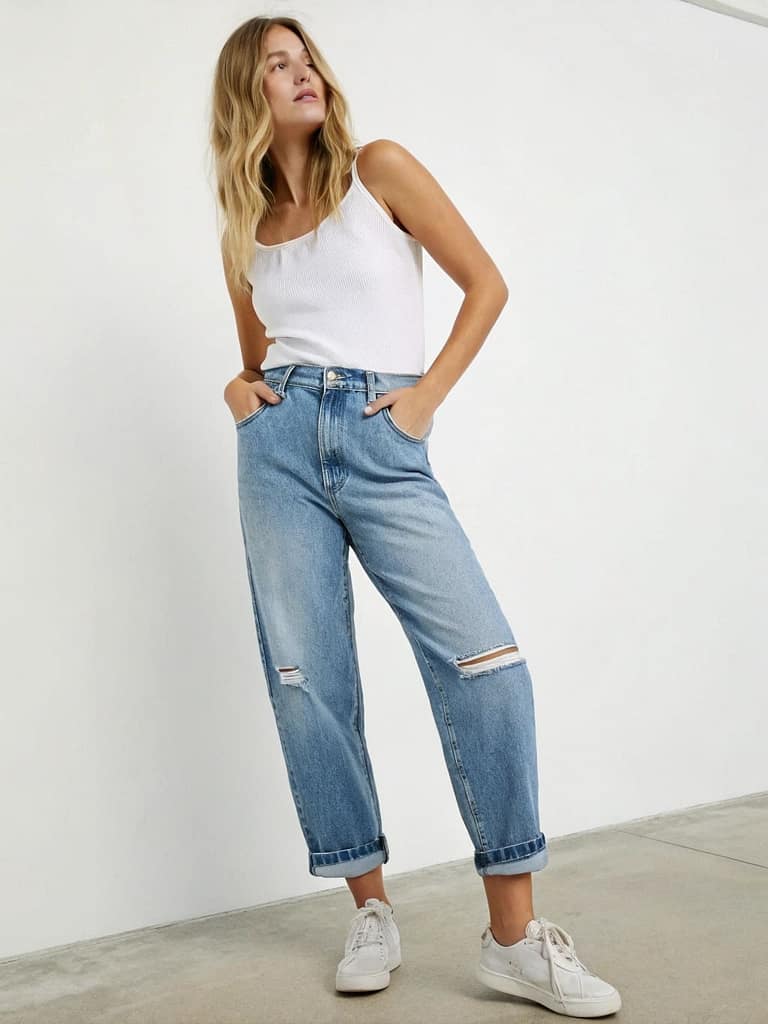
Boyfriend jeans have a relaxed, oversized fit, with a slouchy, laid-back feel. They’re typically a bit looser around the hips and thighs, with rolled cuffs at the bottom. These jeans are perfect for a casual, “borrowed from the boys” style, offering comfort without compromising on style.
Anatomy of Jeans
Jeans might seem like a simple garment, but they’re made up of several distinct parts, each playing a crucial role in both the function and style of the final product. Let’s break down the key components that make up a pair of jeans:
Waistband
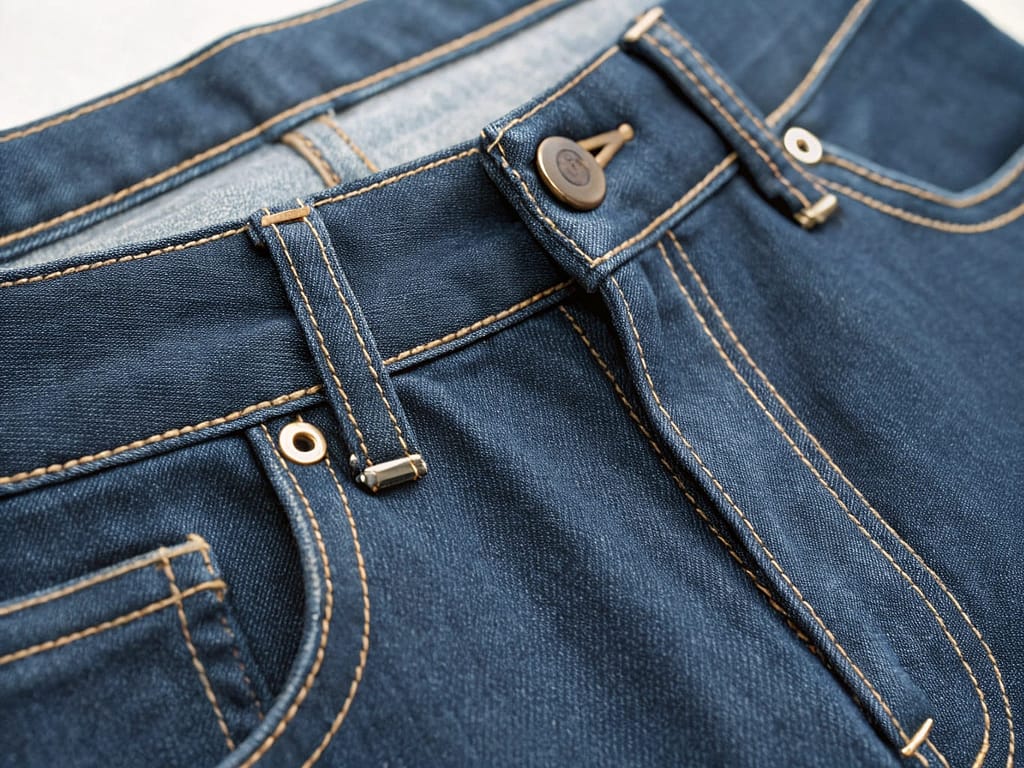
The waistband is the upper edge of the jeans that sits around the waist. It often features a button or hook-and-eye closure, along with belt loops to allow for adjustments and added style. A well-constructed waistband ensures the jeans stay up and fit comfortably, without digging into the skin.
Pockets
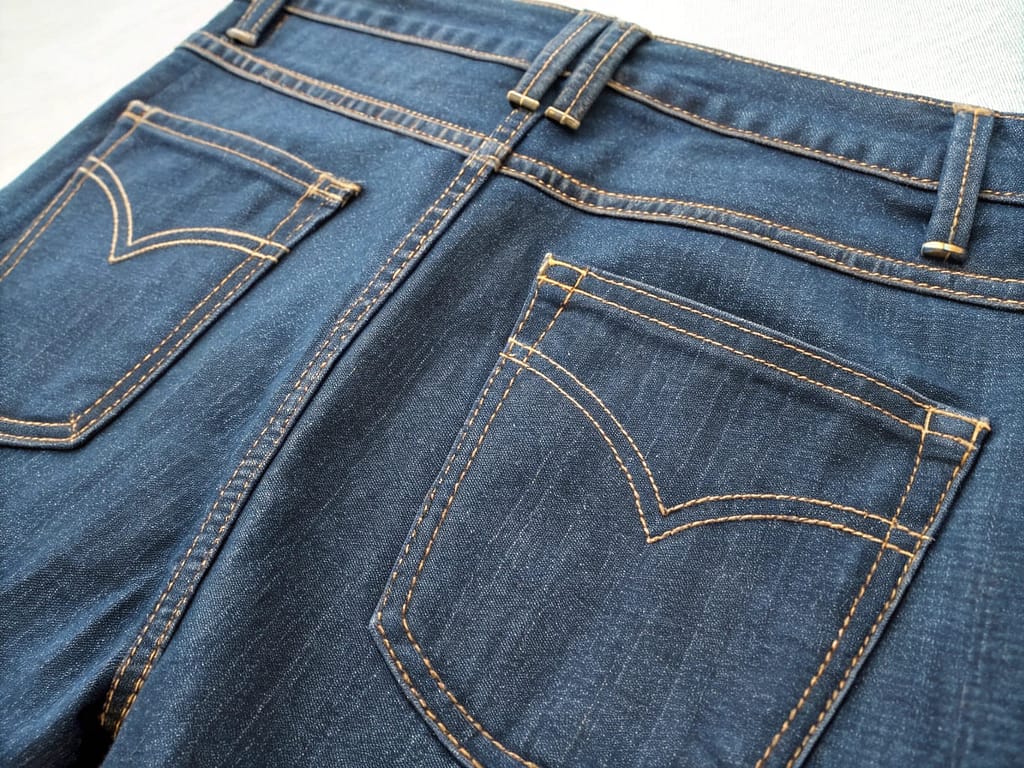
Jeans typically come with two back pockets and two front pockets, though the design can vary. The back pockets often feature stitching or rivets for decoration and durability, while the front pockets are functional for carrying small items. Some jeans also include a small coin pocket inside one of the front pockets, often referred to as a “watch pocket.”
Fly
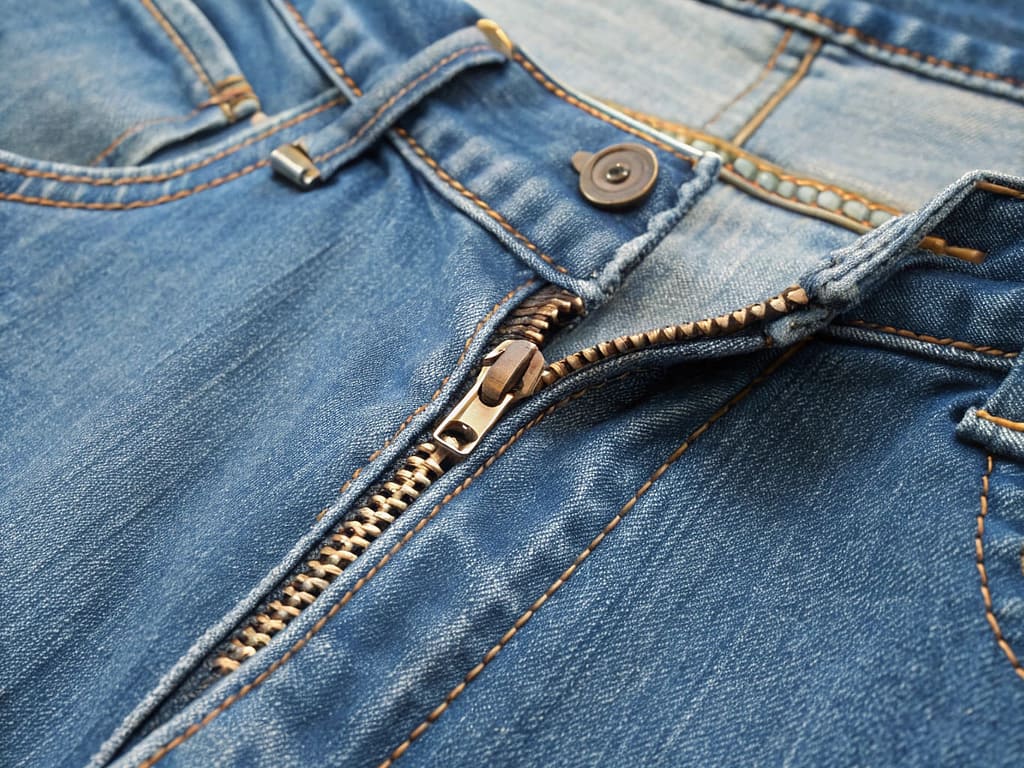
The fly is the opening at the front of the jeans, typically closed with either a zipper or button fly. It allows you to easily put on and take off the jeans. Button flies are often associated with a more vintage look, while zippers are commonly used for modern styles due to their convenience.
Belt Loops
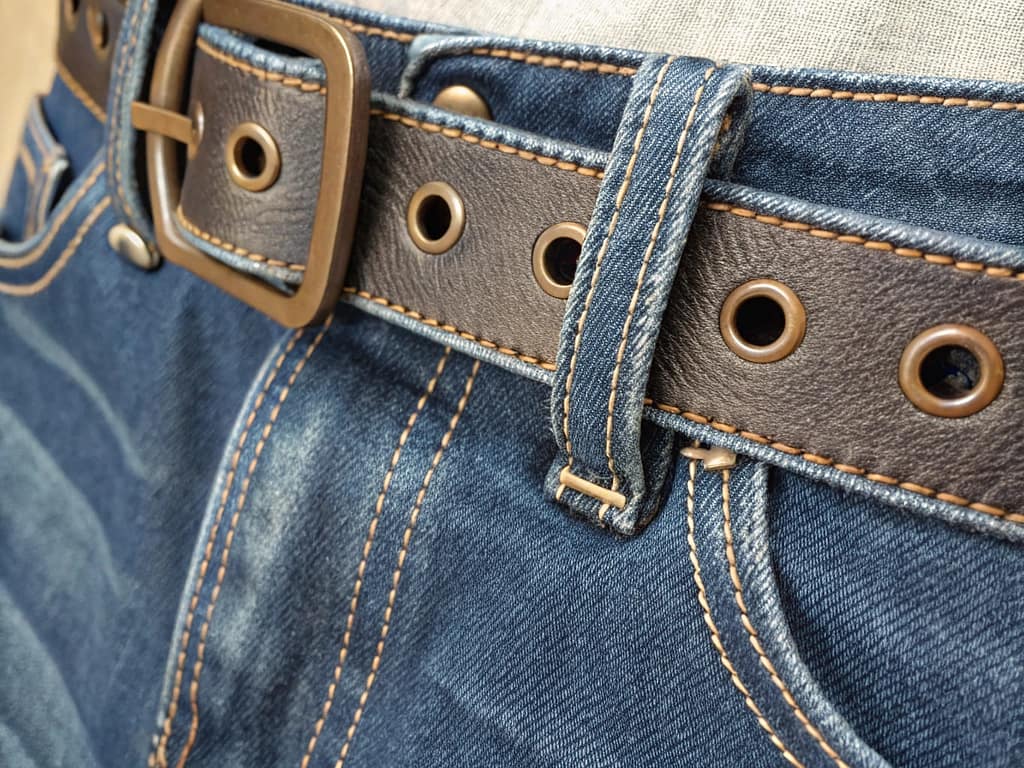
Belt loops are stitched around the waistband to allow you to wear a belt. They’re an essential feature, especially for jeans with a looser fit. Belt loops also contribute to the overall style of the jeans, as they can vary in size and placement.
Seams
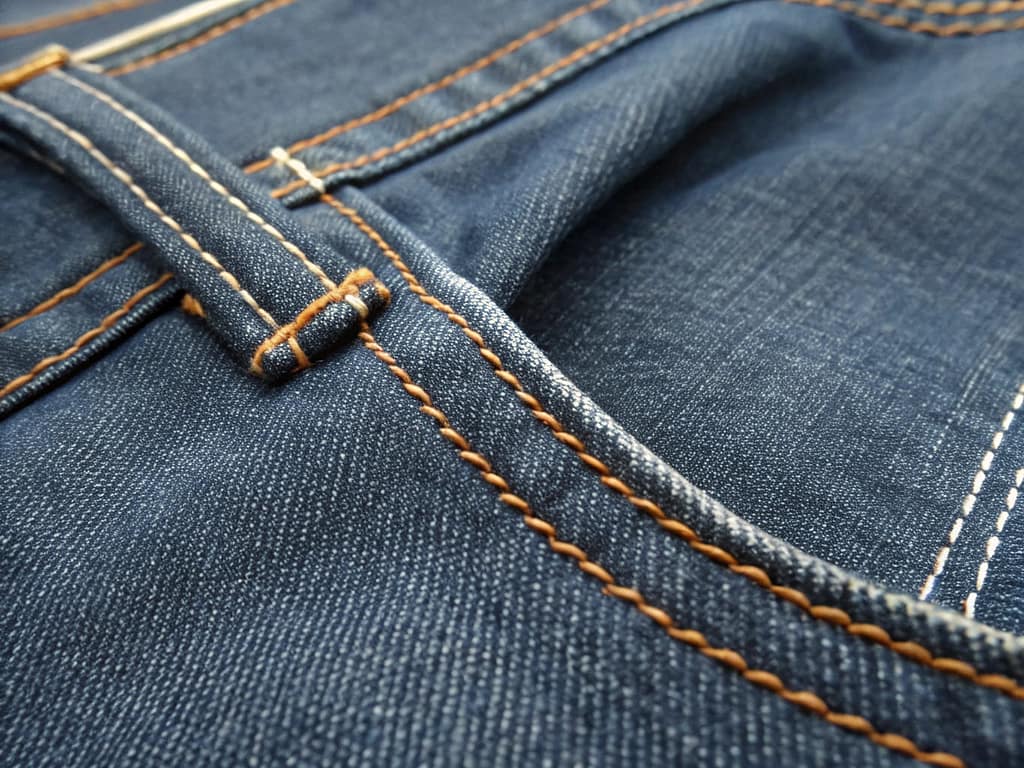
Seams are the lines of stitching that hold the different parts of the jeans together. The most common seams include the inseam (the inner leg), outseam (the outer leg), and the crotch seam. Double-stitched seams are common in jeans for added strength and durability.
Rivets
Rivets are small metal fasteners typically placed at stress points, like the corners of pockets, to reinforce the fabric. These metal accents serve both a functional and decorative purpose. Levi Strauss famously introduced rivets in the 1800s to reinforce the pockets on jeans, a feature that’s become iconic.
Hems
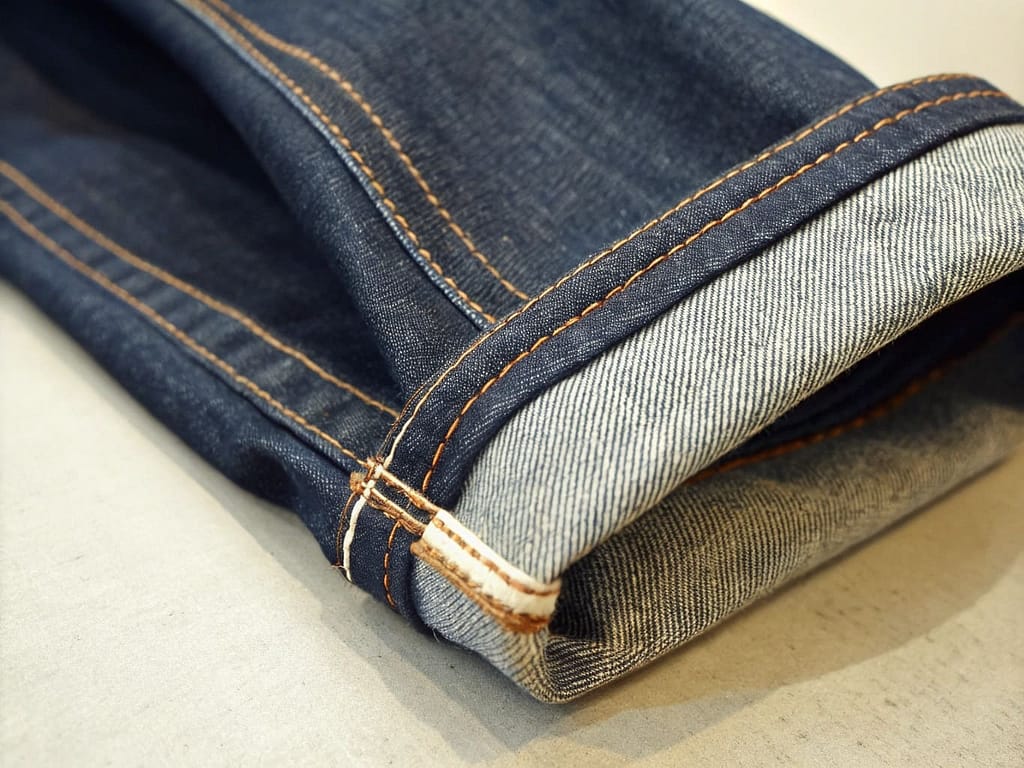
The hem is the bottom edge of the jeans, which can either be finished with a simple stitch or rolled up for a cuffed look. The hem can affect the overall style, especially in cropped or ankle-length jeans.
Brand Patch
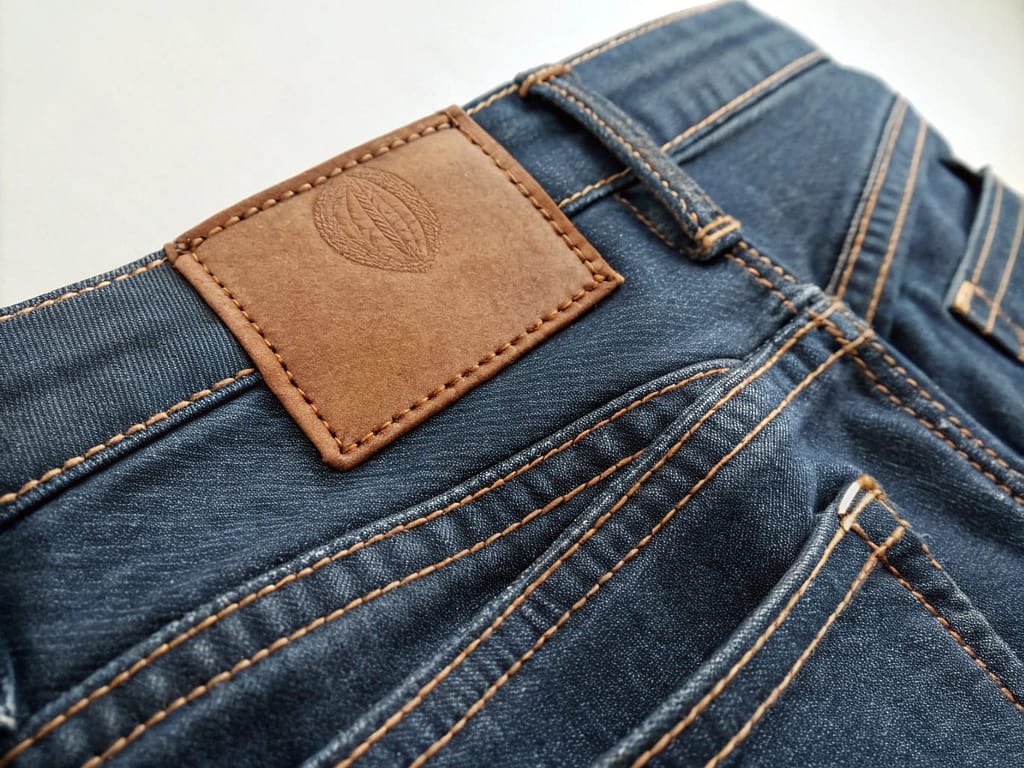
The brand patch is a label or tag often found on the waistband or back pocket of jeans, signifying the manufacturer or designer. Made from leather, fabric, or synthetic materials, it’s an important part of branding and serves as a mark of quality and style. The patch adds a touch of authenticity and character to the jeans, often featuring the logo, name, or a distinctive design. It’s a statement of where the jeans come from and can also add to the overall aesthetic of the garment.
Choosing Quality Fabrics
The fabric used in jeans is the backbone of their durability, comfort, and overall appearance. Denim, by definition, is a durable cotton twill fabric, but the way it’s woven, dyed, and finished can significantly impact the final product. Here’s what to consider when choosing high-quality fabrics for jeans:
Denim Weight
Denim weight is measured in ounces per square yard (oz/yd²), and it determines the thickness and sturdiness of the fabric. Heavier denim, typically around 12–16 oz, is perfect for creating durable, long-lasting jeans, while lighter denim (around 8–10 oz) offers a more breathable and flexible option. Lighter fabrics are often used for summer jeans or more casual styles, while heavier denim provides a more structured and robust feel.
Raw Denim vs. Pre-washed Denim
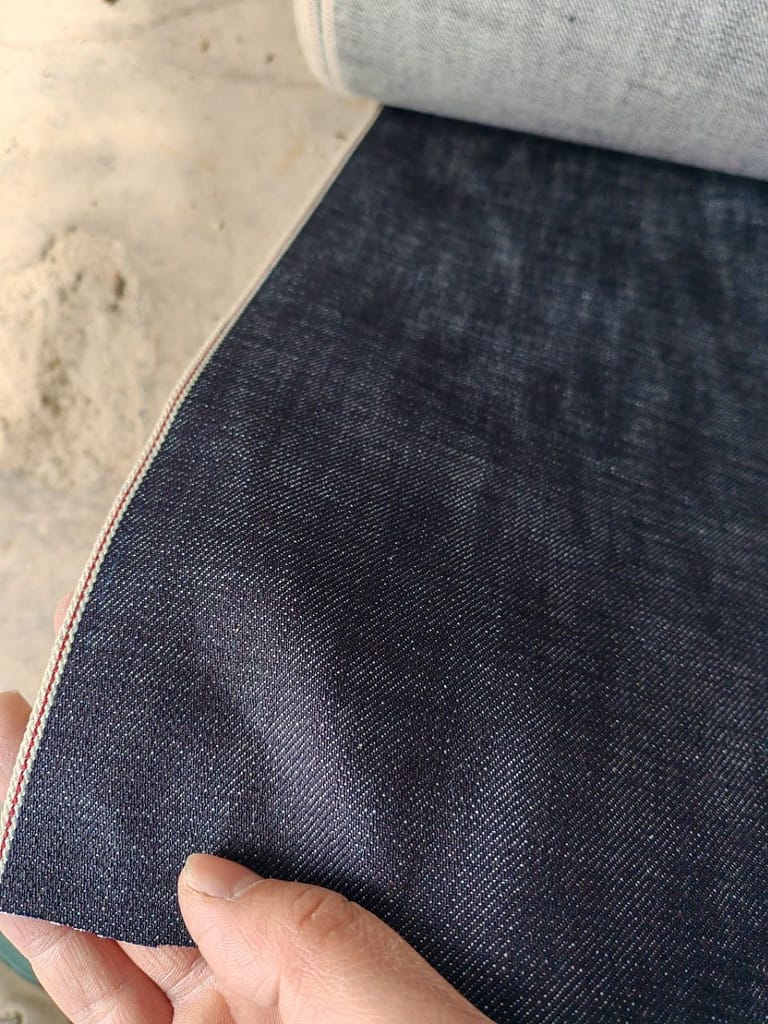
Raw denim refers to denim that hasn’t been washed after being dyed. It retains its natural stiffness and fades over time with wear, giving each pair of jeans a unique, personalised look. These jeans can be quite stiff at first but become more comfortable with use, developing a distinct patina that many denim enthusiasts love.
Pre-washed denim, on the other hand, has been through a washing process to soften the fabric and reduce shrinkage. This kind of denim is generally more comfortable from the start, making it a great option for those who want a pair of jeans that feels good right out of the box.
Stretch Denim
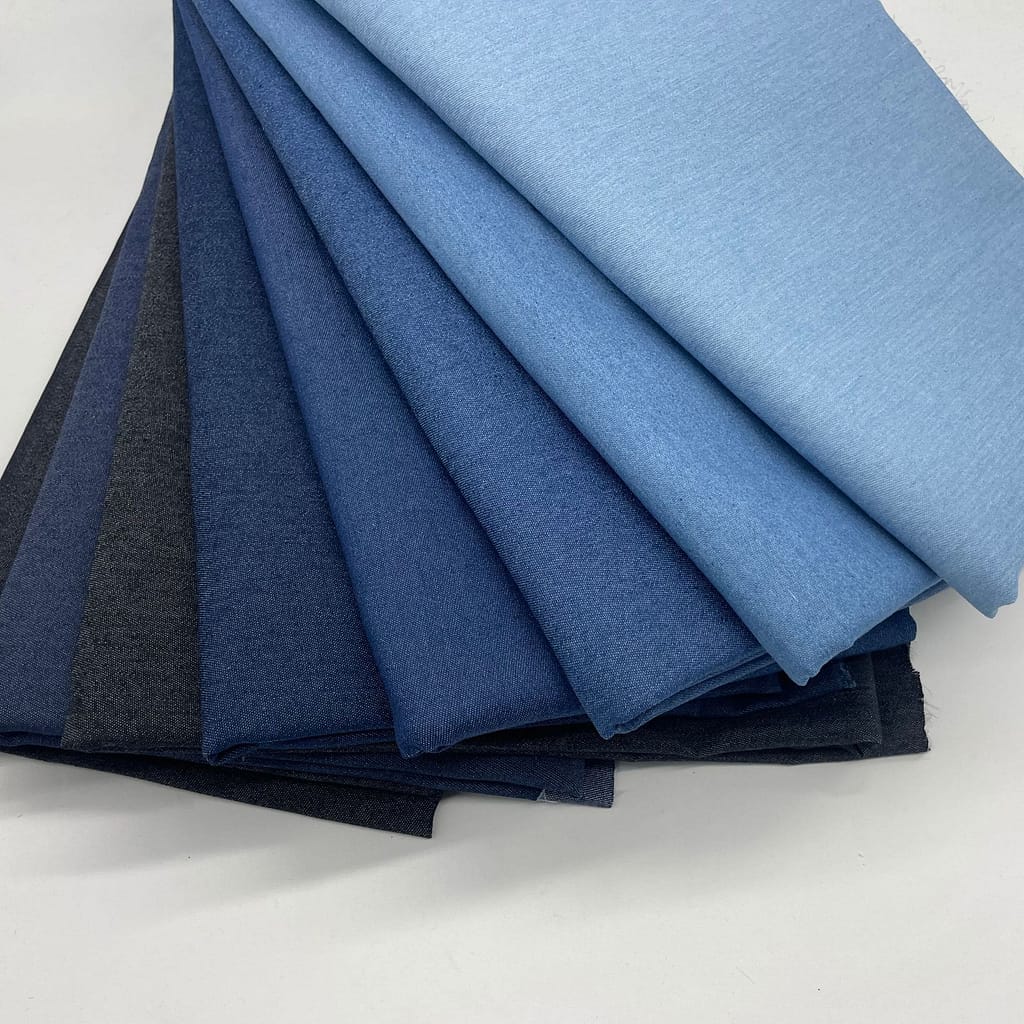
Stretch denim has a small percentage of elastane or spandex blended with cotton, giving the fabric a bit of stretch. This makes the jeans more comfortable and flexible, especially for skinny or slim-fit styles. Stretch denim also helps maintain the shape of the jeans and can prevent sagging, making them a popular choice for modern denim styles.
Selvedge Denim
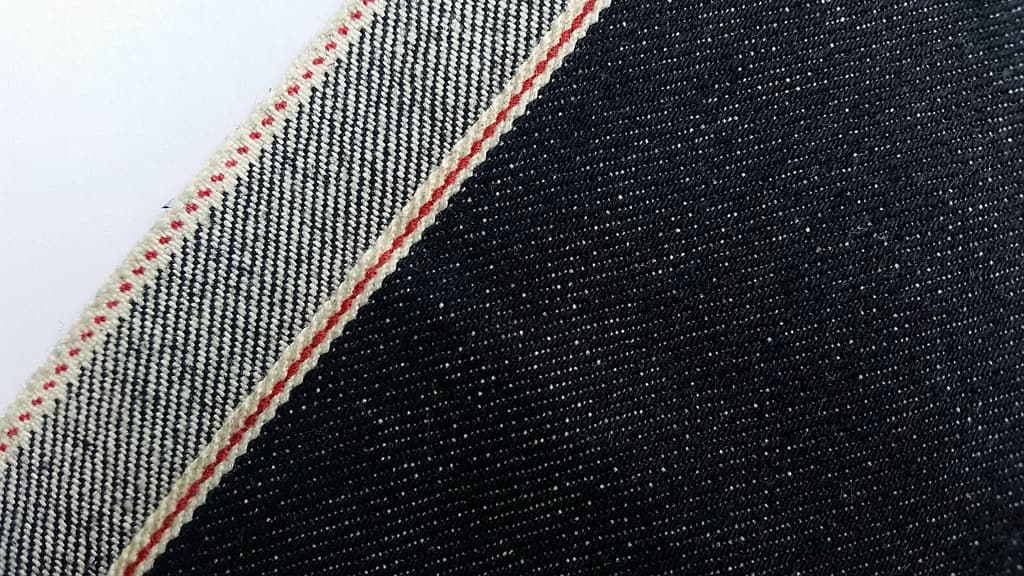
Selvedge denim is made using a special weaving technique that produces a clean, finished edge along the fabric. This technique, often associated with high-end, artisanal jeans, gives the jeans a neat, durable edge that prevents fraying. Selvedge denim is usually more expensive, but it’s known for its superior quality and unique appeal. Many people consider selvedge denim to be the hallmark of high-quality jeans.
Organic and Sustainable Fabrics
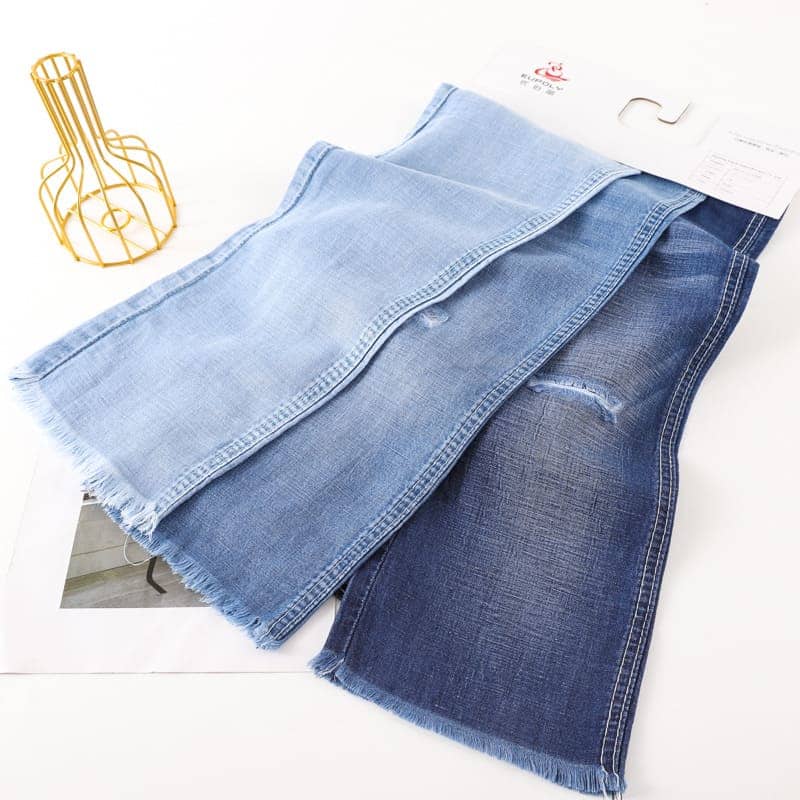
As consumers become more environmentally conscious, there’s a growing demand for jeans made from organic or sustainable materials. Organic cotton, for example, is grown without synthetic pesticides or fertilisers, making it more eco-friendly. Additionally, brands are turning to sustainable manufacturing practices, such as waterless dyeing or using recycled fibres, to reduce the environmental impact of jeans production.
Pattern Making and Cutting
Pattern making and cutting are crucial stages in jeans manufacturing, where the design starts to take shape. These steps determine the fit, size, and overall structure of the jeans. Here’s a look at how patterns are created and the cutting process:
Creating the Pattern
The first step in creating a pair of jeans is designing the pattern. Pattern makers take detailed measurements and translate them into flat paper or digital patterns. These patterns will represent the different parts of the jeans, such as the waistband, legs, pockets, and fly.
Drafting the Pattern: A professional pattern maker will draw out the pattern pieces based on the style and measurements required. The pattern is often split into several parts, as jeans are made up of many sections that need to be sewn together.
Sizing: Adjustments are made depending on the size and fit of the jeans. These patterns are graded to fit different sizes, from small to large. This ensures that each pair of jeans produced will match the intended fit, whether it’s slim, straight, or relaxed.
Fabric Efficiency: The pattern maker also ensures the layout of the pieces is optimised for fabric use. They aim to reduce waste by positioning the pieces carefully on the fabric, so each metre of denim is used efficiently.
Cutting the Denim
Once the patterns are ready, it’s time to cut the fabric. This step is vital because precision in cutting ensures the jeans will fit correctly and that the fabric’s texture and design are aligned properly.
Manual Cutting: In smaller workshops, the fabric is often cut by hand, with pattern pieces laid over the denim and cut using scissors or rotary cutters. This is more labour-intensive but allows for greater control over the fabric.
Automated Cutting: In large-scale production, cutting is usually done using industrial cutting machines. These machines use sharp blades or lasers to cut through multiple layers of fabric simultaneously, speeding up the process while maintaining accuracy.
Stacking the Fabric: Denim is usually cut in large sheets, with the fabric stacked in multiple layers to cut many pieces at once. This is especially important for mass production, ensuring consistency across all pieces.
Different Types of Stitches for Jeans
Stitching is an integral part of jeans manufacturing, and the type of stitch used affects both the durability and style of the final product. Let’s explore the different types of stitches commonly used in jeans to ensure they are both functional and stylish.
1. Plain Stitch
The plain stitch is the most basic and commonly used stitch in jeans. It involves placing two pieces of fabric together and stitching them in a straight line. This simple yet strong stitch is often used for side seams and inseams. Though basic, the plain stitch is reliable and effective for holding the structure of the garment together.
2. Double-stitched Seam
Double stitching involves sewing over the same seam twice, creating two parallel lines of stitching. This stitch is particularly useful in areas that are under stress, such as the crotch, side seams, and inseams. The added stitch line increases durability and prevents the fabric from coming apart under wear and tear. Double-stitched seams are a hallmark of high-quality jeans, providing extra strength where it’s needed most.
3. Flat-Felled Stitch
The flat-felled stitch is a durable and smooth seam, often used on the inseams and outseams of jeans. This stitch involves folding the raw edges of the fabric and sewing them down to create a clean, strong finish. It not only prevents the fabric from unraveling but also ensures a flat, smooth seam that sits comfortably against the skin. Flat-felled seams are a sign of quality craftsmanship and are often used in high-end denim.
4. Overlocked Stitch
Overlocking is a method used to finish the raw edges of fabric and prevent them from fraying. An overlocked stitch is typically made with a special overlock machine that wraps the fabric edge in thread, securing it in place. This is often used in the lining or internal seams of jeans. It’s a common technique to ensure the jeans remain durable and tidy on the inside as well as the outside.
5. Topstitching
Topstitching is a decorative yet functional stitch that’s sewn on the outer edges of the fabric, typically in contrasting thread colours. This type of stitching is often used on the waistband, pockets, and along the seams to add visual appeal. Not only does it enhance the style of the jeans, but it also reinforces the strength of the garment.
6. Chain Stitch
The chain stitch is a strong and flexible stitch that creates a looped effect, giving it both durability and stretch. It’s commonly used for hems and other areas that may need a bit of give. Chain stitching is often seen in more vintage-style jeans and is known for its distinctive look and feel.
7. Bar Tack
Bar tacks are small, heavy-duty stitches that are applied at stress points like the pockets, belt loops, and the fly. These tacks help reinforce high-stress areas, ensuring that the fabric doesn’t tear or rip over time. Bar tacks are typically done with a zig-zag stitch, and their purpose is purely functional, although they also add a subtle detail to the design of the jeans.
Measurement Points for Jeans
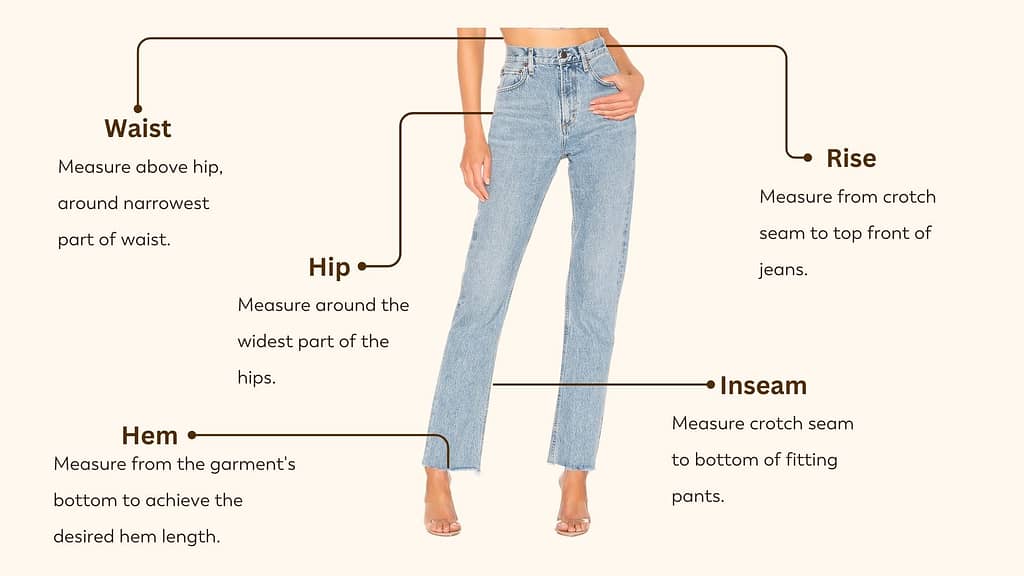
Getting the right fit is essential when manufacturing jeans, and the key to ensuring this is accurate measurement at specific points during production. Each pair of jeans must be precisely measured to meet the desired fit and size, whether it’s a slim fit or a relaxed fit. Here are the critical measurement points to consider:
1. Waistband Measurement
The waistband measurement is perhaps the most important of all, as it determines how the jeans will fit around the waist. It is measured from one side of the waistband to the other, ensuring that the waistband fits snugly but comfortably. For jeans with a button or zipper fly, the waistband measurement ensures the closure fits perfectly when fastened.
2. Hip Measurement
The hip measurement refers to the widest part of the hips, usually about 8 inches below the waistband. This measurement ensures the jeans fit comfortably around the hips and that there is enough room for movement. Jeans with a relaxed or loose fit will have a larger hip measurement, while skinny or slim-fit jeans will be tighter in this area.
3. Inseam
The inseam is the measurement from the crotch to the bottom of the leg. It’s crucial for determining the length of the jeans and ensuring they’re neither too long nor too short. Inseam lengths vary depending on the style (e.g., cropped jeans, regular length, or full-length), and custom inseam measurements can be taken for a more personalised fit.
4. Outseam
The outseam is the measurement from the waistband to the bottom hem of the jeans, along the outer edge of the leg. While it’s often similar to the inseam, the outseam provides a more accurate measurement for the overall length and helps to align the jeans’ proportions properly.
5. Rise Measurement
The rise of jeans refers to the distance between the crotch and the waistband. It is one of the defining factors in jeans’ fit and comfort. There are three main types of rises:
- Low Rise: The waistband sits low on the hips, typically 7–8 inches from the crotch.
- Mid Rise: The waistband sits just above the hips, around 9–10 inches from the crotch.
- High Rise: The waistband sits well above the hips, usually 11 inches or more from the crotch.
6. Thigh Measurement
The thigh measurement is taken around the fullest part of the thigh, typically around 2–3 inches below the crotch. This measurement ensures that jeans, especially straight-leg and bootcut styles, have enough room for movement and are comfortable around the thighs without being too tight.
7. Knee Measurement
The knee measurement is important for styles such as skinny jeans or bootcut jeans. It’s taken around the knee, just above the knee cap. The knee measurement helps ensure that the jeans fit comfortably around the leg, especially if the fit tapers down towards the ankle.
8. Leg Opening
The leg opening refers to the circumference of the jeans at the hem. This measurement is crucial for styles like bootcut, flare, and skinny jeans, as it impacts the overall silhouette. A wider leg opening allows for boots to fit comfortably underneath, while a narrower opening is perfect for slim or tapered fits.
The Art of Jeans Printing
Jeans are not just about fit and fabric – the finishing touches like prints, designs, and embellishments can take a pair of jeans from simple to stylish. Printing is a technique that allows manufacturers to add logos, graphics, or patterns to the denim, making each pair unique. Here’s a breakdown of how jeans printing works:
1. Screen Printing
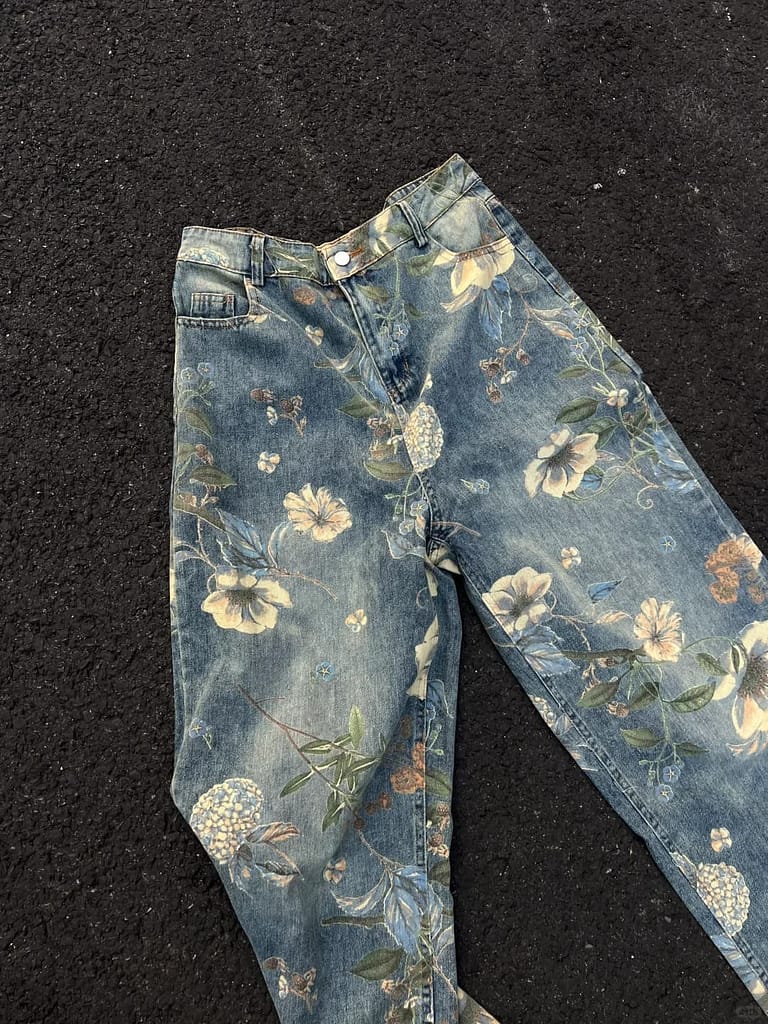
Screen printing is one of the most popular methods for adding designs to jeans. It involves pushing ink through a mesh screen, which is used as a stencil to transfer a design onto the fabric. This technique is typically used for large designs or logos, and it’s durable enough to withstand multiple washes.
- Advantages: It’s cost-effective for large batches and offers excellent colour vibrancy.
- Limitations: Not ideal for intricate, multi-coloured designs, as each colour requires a separate screen.
2. Direct-to-Garment (DTG) Printing
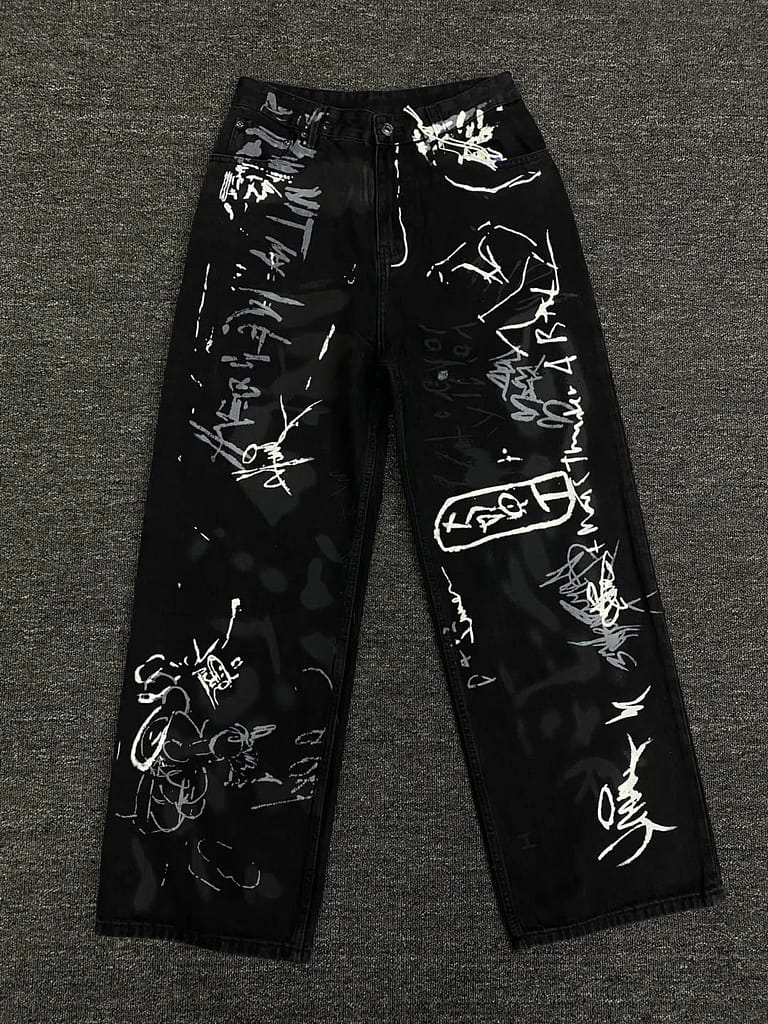
Direct-to-garment (DTG) printing is a newer, digital method that allows for more detailed, full-colour prints directly onto the fabric. DTG uses inkjet technology to print designs, making it ideal for intricate or small-batch printing, such as custom graphics, artwork, or photos.
- Advantages: It can handle complex designs and produces a soft finish without compromising the fabric’s texture.
- Limitations: While great for detail, DTG can be more expensive than screen printing, especially for large quantities.
3. Discharge Printing
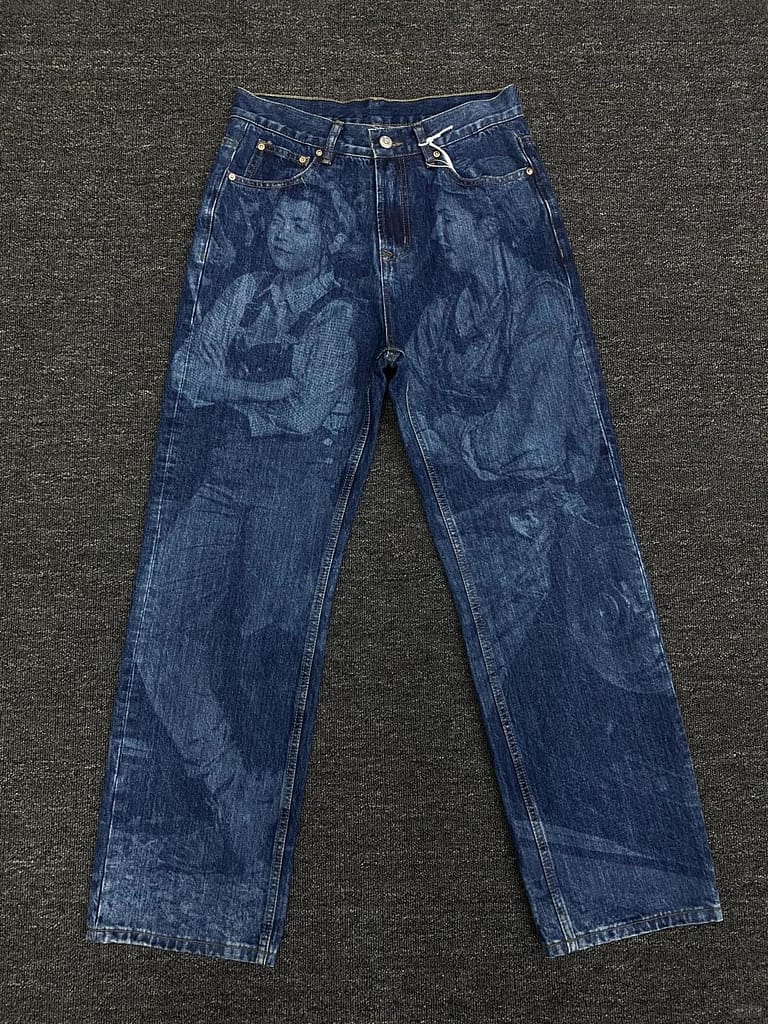
Discharge printing is a technique where a special chemical is used to remove the dye from the fabric, allowing for a new design or graphic to show through. This method results in a design that’s soft to the touch, as the ink doesn’t sit on top of the fabric like traditional printing. Discharge prints are commonly used for vintage or distressed looks.
- Advantages: Results in a soft, breathable print that doesn’t feel stiff.
- Limitations: Limited to light-colored fabrics and requires a lot of care during the washing process.
4. Heat Transfer Printing
Heat transfer printing involves using heat and pressure to transfer a design from a special paper to the denim fabric. The design is printed onto the paper, which is then applied to the fabric using a heat press. This method is commonly used for custom prints and logos.
- Advantages: Allows for high-quality, full-colour prints and is ideal for smaller runs.
- Limitations: Not as durable as other methods, and the print can begin to peel or fade over time with repeated washing.
5. Embroidery
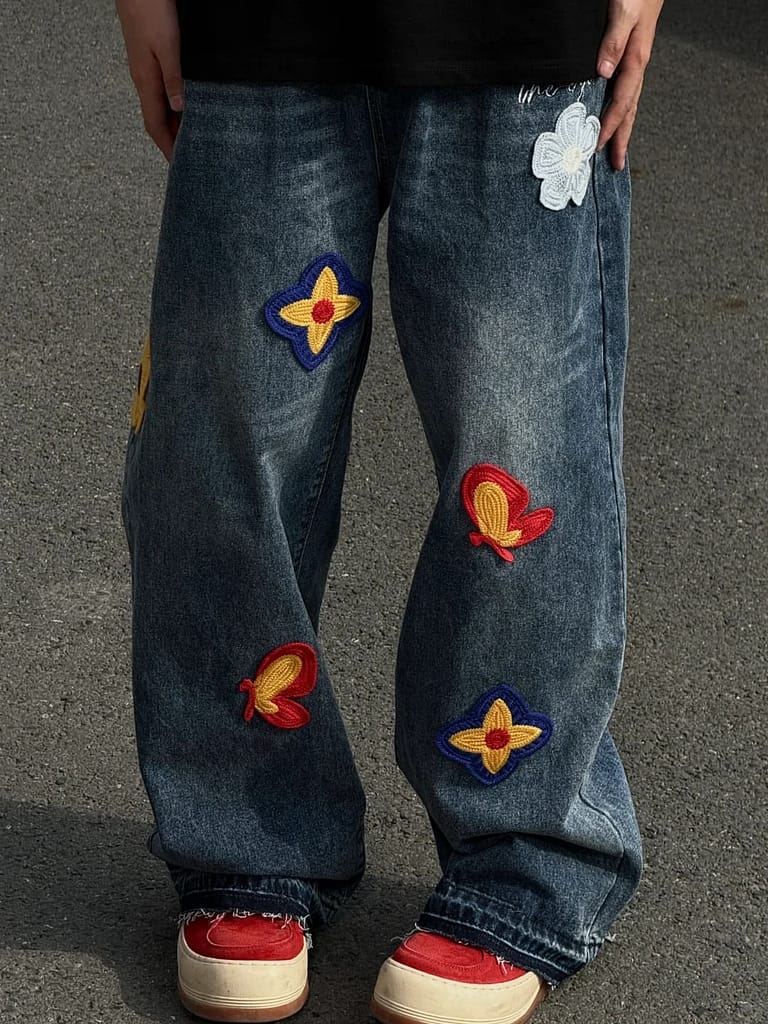
Although not technically a form of printing, embroidery is another popular way of adding designs to jeans. Small logos, patterns, or even names can be stitched onto the fabric using thread. Embroidery is often used on pockets, waistband labels, or along the seams.
- Advantages: Embroidery creates a high-quality, durable design that adds texture to the jeans.
- Limitations: It can be time-consuming and costly for large designs, and it’s not ideal for intricate or full-colour prints.
Types of Garment Washing for Jeans
Garment washing is a crucial part of the jeans manufacturing process, as it helps achieve the desired texture, colour, and comfort. Whether it’s making the denim softer, giving it a worn-in look, or creating unique faded effects, washing plays a significant role in the final appearance of the jeans. Here are the most common garment washing techniques used in jeans manufacturing:
1. Stone Washing
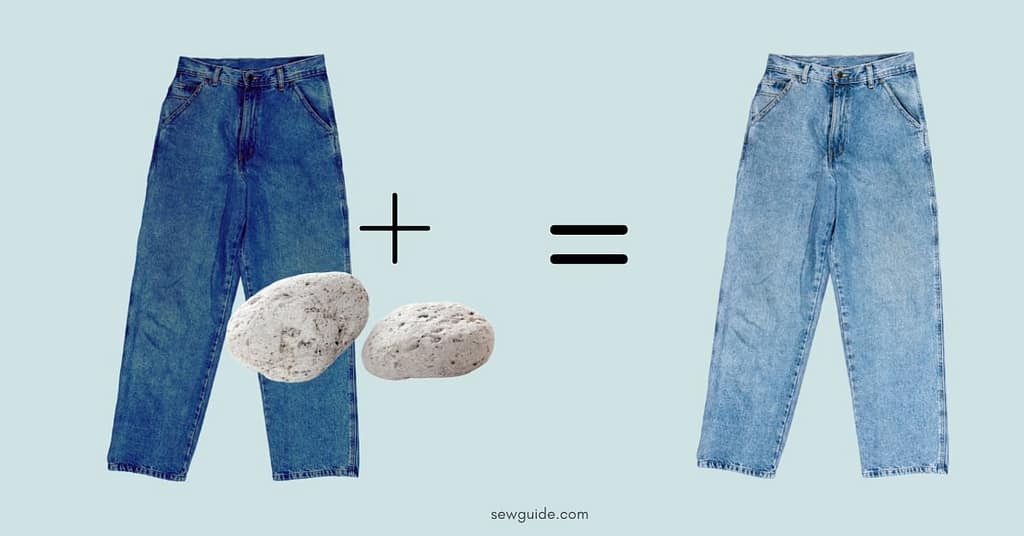
Stone washing is a popular method used to give jeans an aged, vintage appearance. During this process, large pumice stones are tumbled with the jeans in a washing machine or drum. The stones gently abrade the fabric, softening it and creating the signature faded look that’s synonymous with well-worn denim.
2. Acid Washing
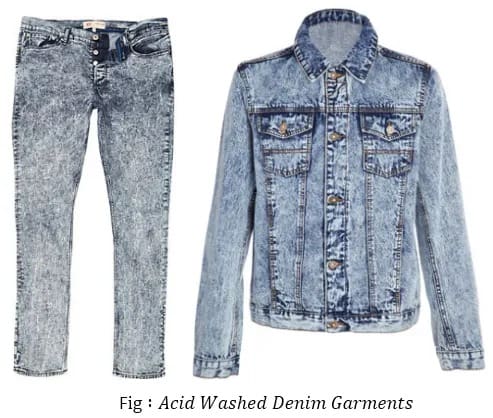
Acid washing, also known as “snow washing,” is a technique that uses chlorine bleach or other chemicals to create a high-contrast, bleached look on denim. The process involves soaking the jeans in a bleach solution or using pumice stones soaked in bleach. The result is a striking contrast of darker and lighter areas on the fabric.
3. Enzyme Washing
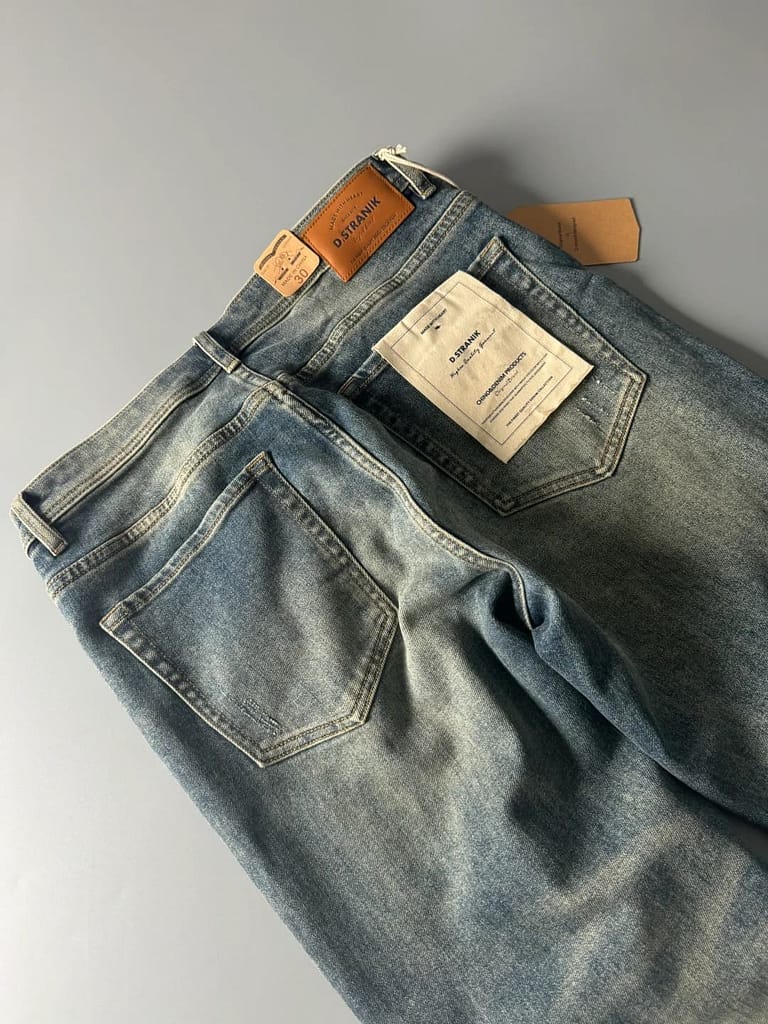
Enzyme washing uses biological enzymes to break down the cellulose in the fabric, softening it and giving it a worn-in feel. This process is more environmentally friendly than stone or acid washing because it uses fewer chemicals and is less abrasive.
4. Sandblasting
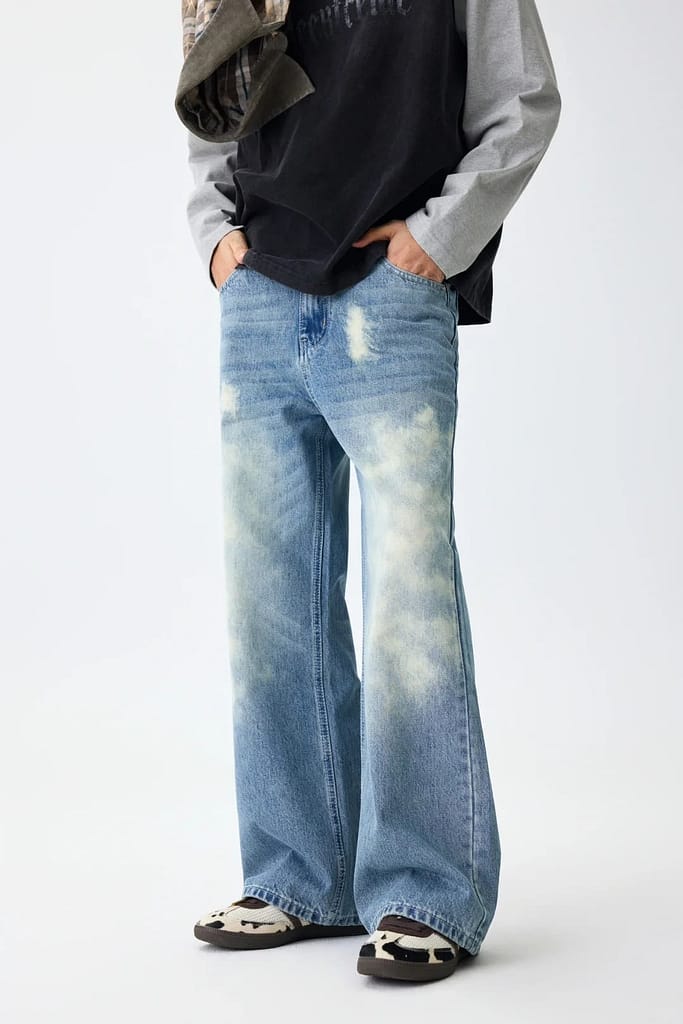
Sandblasting is a process that uses high-pressure air to blow sand onto the fabric to achieve a distressed, worn-in look. This method gives jeans a faded appearance, particularly on areas such as the thighs, knees, and waistband.
5. Rinse Washing
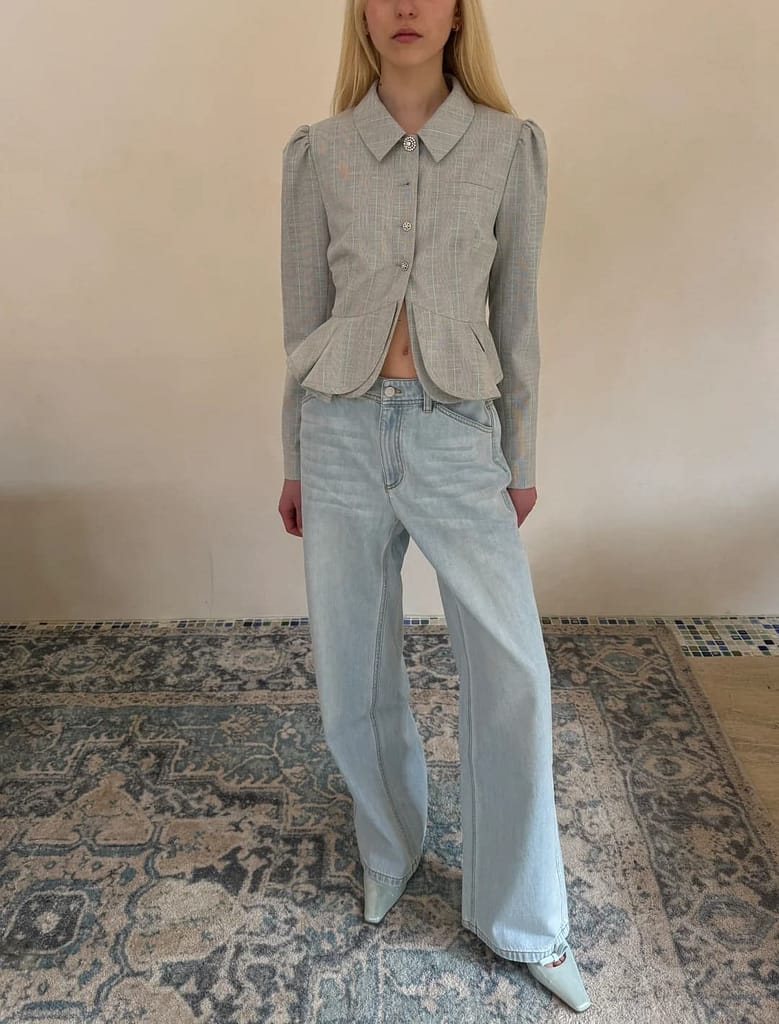
Rinse washing is the simplest and least invasive method of garment washing. It involves washing the jeans in water to remove any residual chemicals from the manufacturing process and soften the fabric slightly. Rinse-washed jeans retain much of their original colour and texture but feel more comfortable than raw denim.
6. Stone Bleaching (Faded)
Stone bleaching involves using bleach in combination with stones to fade the fabric. Unlike acid washing, which uses pure bleach, stone bleaching involves soaking the jeans in a bleach solution and then tumbling them with pumice stones to remove the dye from specific areas. This technique gives jeans a more subtle, faded effect compared to the high-contrast results of acid washing.
7. Monkey Washing
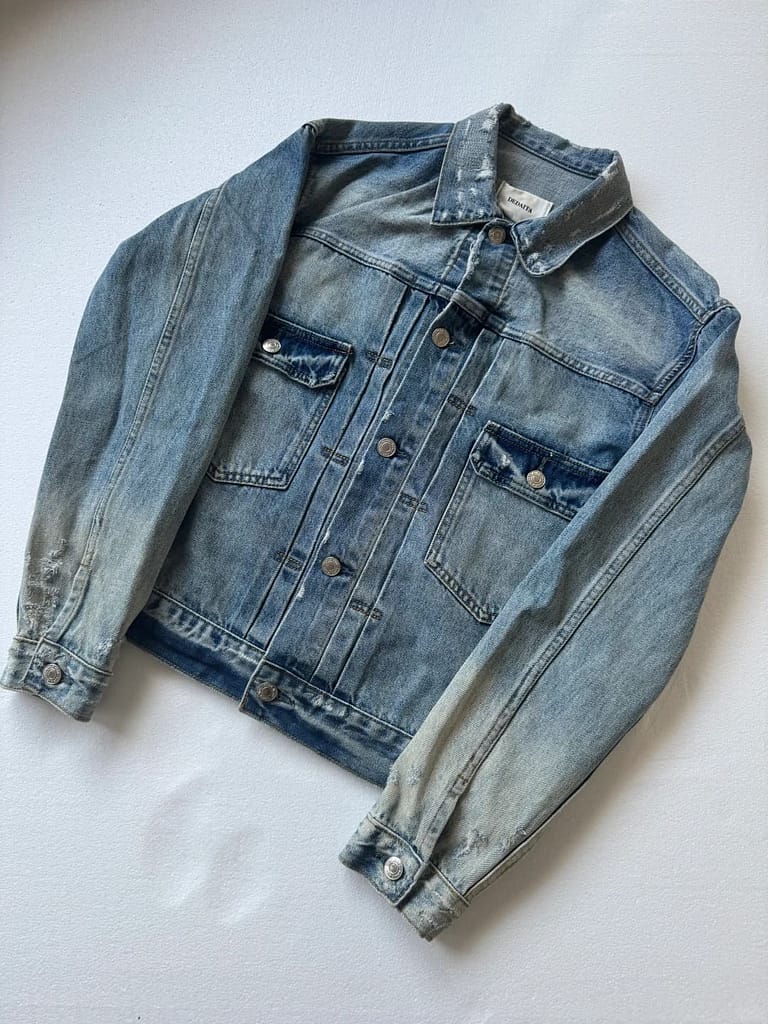
Monkey washing is a unique technique used to achieve a heavily distressed look, particularly around the thighs, knees, and waistband. In this process, the jeans are soaked in a special chemical solution and then manually wrinkled, twisted, or scrunched by hand. This creates a deep, textured fading effect and gives the jeans an ultra-worn-in feel, almost as though they’ve been through years of use.
8. Moustache Effect
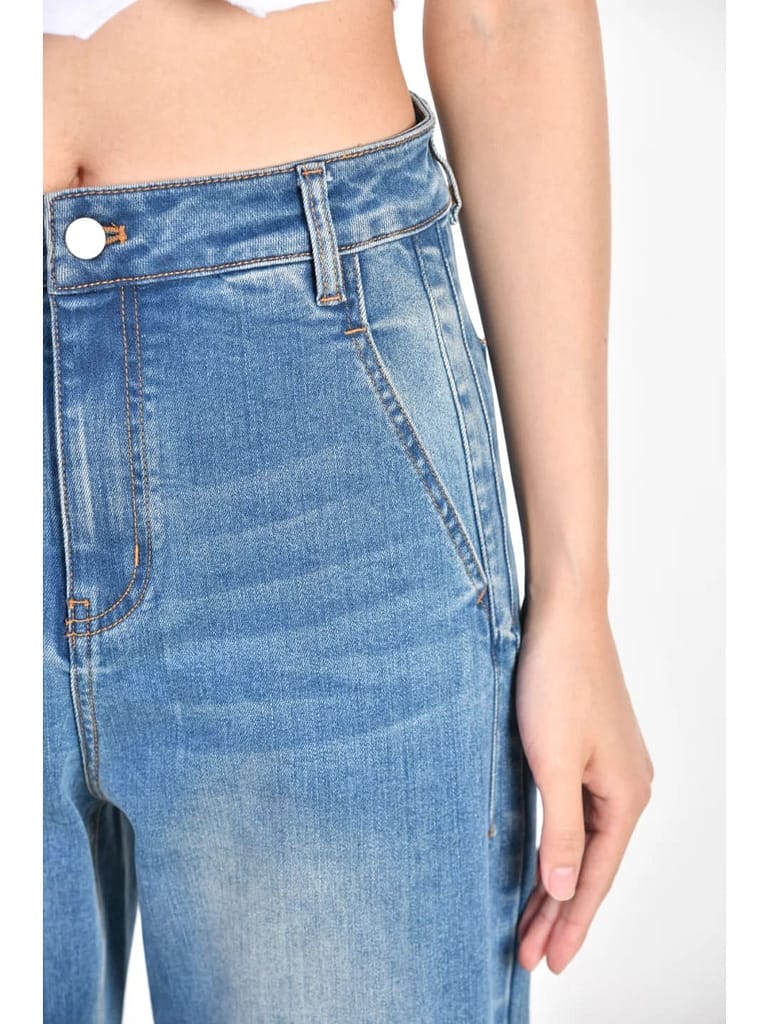
The moustache effect is a technique used to create the appearance of naturally faded areas around the crotch and thigh regions, mimicking the look of jeans that have been worn and creased over time. This effect is achieved by either hand sanding or using specialized machines to carefully lighten the fabric in these specific areas, resulting in a faded, “moustache-like” pattern.
Fabric Dyeing Techniques for Jeans
Dyeing is one of the most important steps in jeans manufacturing, as it gives denim its signature blue colour. Different dyeing techniques impact the final look, durability, and environmental footprint of the jeans. Here are the most common fabric dyeing techniques used in the denim industry:
1. Indigo Dyeing
Indigo dyeing is the traditional method used to give jeans their classic blue shade. The yarns are repeatedly dipped into an indigo dye bath and then exposed to air, allowing oxidation to develop the deep blue hue.
• Advantages: Creates the signature denim look and allows for natural fading over time.
• Limitations: Uses large amounts of water and chemicals, making it less eco-friendly.
2. Sulfur Dyeing
Sulfur dyeing is used to create alternative denim colours, such as black, brown, or green. Instead of indigo, sulfur-based dyes are applied to the fabric to achieve deeper, richer shades.
• Advantages: Produces a wide range of colours beyond traditional blue.
• Limitations: Colours may fade faster than indigo, leading to less longevity in the appearance.
3. Rope Dyeing
Rope dyeing is one of the most effective methods for indigo dyeing. The yarns are twisted into ropes and repeatedly dipped into dye baths, resulting in a deep, even colour. This method is widely used in premium denim manufacturing.
• Advantages: Ensures strong colour penetration while preserving the denim’s ability to fade beautifully.
• Limitations: More expensive and time-consuming than other methods.
4. Slasher Dyeing
In slasher dyeing, warp yarns are passed through a series of dye baths in a continuous process, then dried between dips. This method is faster and more cost-efficient than rope dyeing.
• Advantages: Quick and cost-effective for large-scale denim production.
• Limitations: The dye penetration is shallower, meaning the jeans may not fade as naturally as rope-dyed denim.
5. Natural and Eco-friendly Dyeing
With sustainability becoming a priority, many manufacturers are turning to plant-based or synthetic eco-friendly dyes that reduce water and chemical usage. These include natural indigo extracted from plants and modern waterless dyeing techniques.
• Advantages: Environmentally friendly and reduces water pollution.
• Limitations: Natural dyes may not be as colourfast as synthetic alternatives.
Quality Control Measures for Jeans
Quality control is essential in jeans manufacturing to ensure that every pair meets industry standards for durability, fit, and appearance. From checking stitching strength to testing fabric durability, here’s how manufacturers maintain high-quality jeans:
Fabric Inspection
Before production begins, denim fabric is inspected for defects such as uneven dyeing, weaving flaws, or stains. This step ensures only high-quality material is used.
Stitching and Seam Testing
Seams and stitches are checked to ensure they are strong enough to handle stress. Double-stitched or reinforced seams are tested by pulling and stretching the fabric.
Shrinkage and Stretch Tests
Since denim can shrink after washing, manufacturers perform shrinkage tests to ensure jeans maintain their original size. For stretch denim, elasticity tests are done to check the fabric’s recovery after being stretched.
Colour Fastness Test
To prevent excessive fading, the jeans are tested for colour retention. This involves washing and rubbing the fabric to see if the dye transfers or fades too quickly.
Fit and Measurement Checks
Each batch of jeans is measured against pattern specifications to ensure consistency in waist, inseam, and other key points. Random sampling ensures that all jeans meet sizing standards.
Button and Zipper Strength Tests
Fasteners like buttons, rivets, and zippers are tested to ensure they stay securely attached and function properly. Pull tests and durability checks ensure they won’t break with repeated use.
Final Inspection
Before packaging, each pair is checked for loose threads, stains, or irregular stitching. Only jeans that pass all quality checks are approved for sale.
Packaging and Branding of Jeans
Branding through Packaging Design
Branding extends beyond the jeans themselves to the packaging. High-end brands often invest in unique, eco-friendly packaging designs that reflect their values, such as using recycled cardboard or minimalist designs. In contrast, mass-market brands tend to focus on cost-efficient, functional packaging, keeping their costs low.
Eco-friendly Packaging Initiatives
Sustainability is a growing trend in fashion, and many jeans manufacturers are moving toward eco-friendly packaging. This includes using biodegradable polybags, recyclable hangtags, or even packaging made from organic cotton or recycled materials. Some brands are also reducing their packaging footprint by eliminating plastic or offering packaging made from recycled denim scraps.
Conclusion
Creating the perfect pair of jeans is all about the details—choosing quality fabric, nailing the fit, and perfecting the stitching. Every step in the process contributes to a product that’s stylish, durable, and worth investing in.
If you’re looking to launch or refine your jeans brand, finding the right manufacturer who gets your vision is key to making it a reality. Ready to bring your ideas to life? Let’s make it happen.
FAQ: Jeans Manufacturing
1. How long does it take to manufacture a pair of jeans?
The time it takes to manufacture jeans can vary, but it generally ranges from a few days to a few weeks. This depends on the complexity of the design, the washing techniques used, and the volume of production. For more intricate or custom designs, the process may take longer.
2. What fabric is used in making jeans?
Jeans are typically made from denim fabric, which is a type of woven twill cotton. The most common type of denim used is indigo-dyed cotton, but there are various other materials, including stretch fabrics, to offer a better fit and comfort.
3. How are jeans dyed?
Jeans are usually dyed using indigo dye, which gives them their classic blue colour. The dyeing process can involve techniques like rope dyeing or slasher dyeing. Other colours can be achieved using sulfur dyeing or by adding different pigments.
4. What is “garment washing” and why is it done?
Garment washing is a process used to soften denim and achieve specific finishes like faded or distressed looks. Common washing techniques include stone washing, acid washing, and enzymatic washing. These processes enhance the texture and visual appeal of the jeans.
5. What are the different types of jeans styles?
Jeans come in many different styles, including skinny jeans, straight leg, bootcut, flared, boyfriend jeans, and slim fit jeans. Each style offers a unique look and fit, catering to different preferences.
6. What is a brand patch on jeans?
A brand patch is a piece of leather, fabric, or synthetic material sewn into the waistband or pocket of jeans. It typically displays the brand’s logo and serves as a mark of authenticity and style.
7. How do manufacturers ensure the quality of jeans?
Manufacturers implement quality control measures such as fabric inspection, stitching and seam testing, colour fastness tests, shrinkage and stretch tests, and final product inspections to ensure that only high-quality jeans make it to market.
8. Why are some jeans more expensive than others?
Jeans can vary in price depending on factors like the quality of the fabric, the complexity of the design, the brand reputation, and the production methods. High-end jeans often use premium materials, custom washes, and detailed craftsmanship, which contribute to their higher cost.
9. How can I tell if a pair of jeans is high-quality?
Look for strong stitching, even dyeing, and reinforced seams. High-quality jeans will feel sturdy but comfortable and will often have a clean finish with no loose threads. The fit should also be precise, with proper shaping to your body.
10. Can jeans be eco-friendly?
Yes, many brands are adopting sustainable practices in denim manufacturing, such as using eco-friendly dyes, recycling old denim, and reducing water usage during the washing process. Look for certifications like Global Organic Textile Standard (GOTS) or OEKO-TEX to find eco-conscious brands.
If you are looking for more trusted Chinese jeans manufacturers, you can also read our article.
